21 Spectacular Things to Do with Kids in Seville, Spain
Seville will dance into your heart with its beautiful backdrops, cultural activities, and passion for life. It’s the capital of the Andalusia region, renowned as the birthplace of both flamenco and tapas. The fourth largest city in Spain offers plenty for parents to appreciate and ways for children to play. Discover 21 spectacular things to do in Seville with kids.
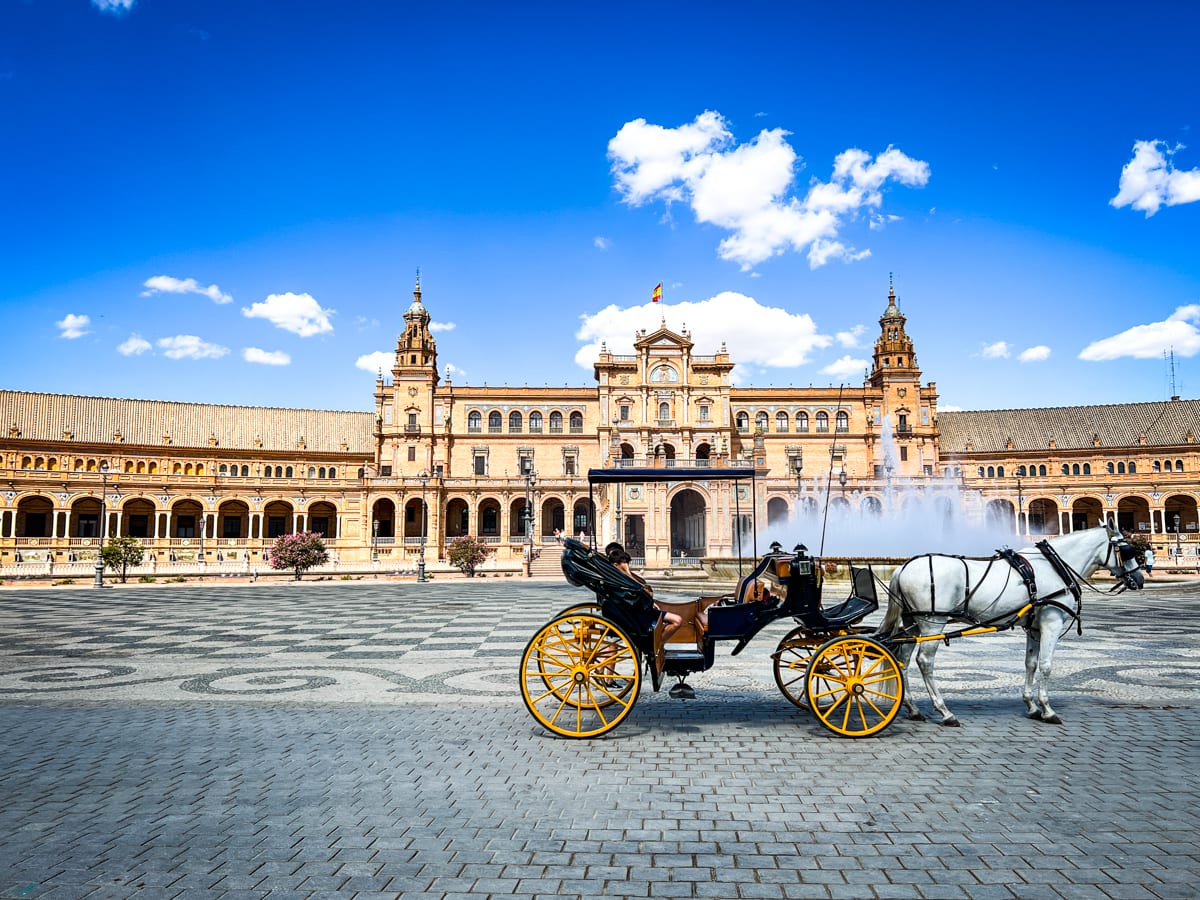
Travel Mamas and Grownup Getaways sometimes receive compensation and/or hosted travel and sample products related to blog posts. This story may include affiliate links for which we receive a small commission at no extra cost to consumers. As an Amazon Associate, we earn money from qualifying purchases.
1. Plaza de España
I’m lucky to have visited a lot of pretty sights during my travels but Seville’s Plaza de España stands out among the most beautiful. I literally got chills upon first sight of this 53,000-square-foot, half-moon square.
The city of Seville built the Plaza de España in 1929 to host the World Fair. Today, most of the structures are used for government purposes. Both sides of the rounded plaza are flanked by towers. The cheery Spanish architecture features a blend of Baroque Revival, Renaissance Revival, and Moorish Revival styles.
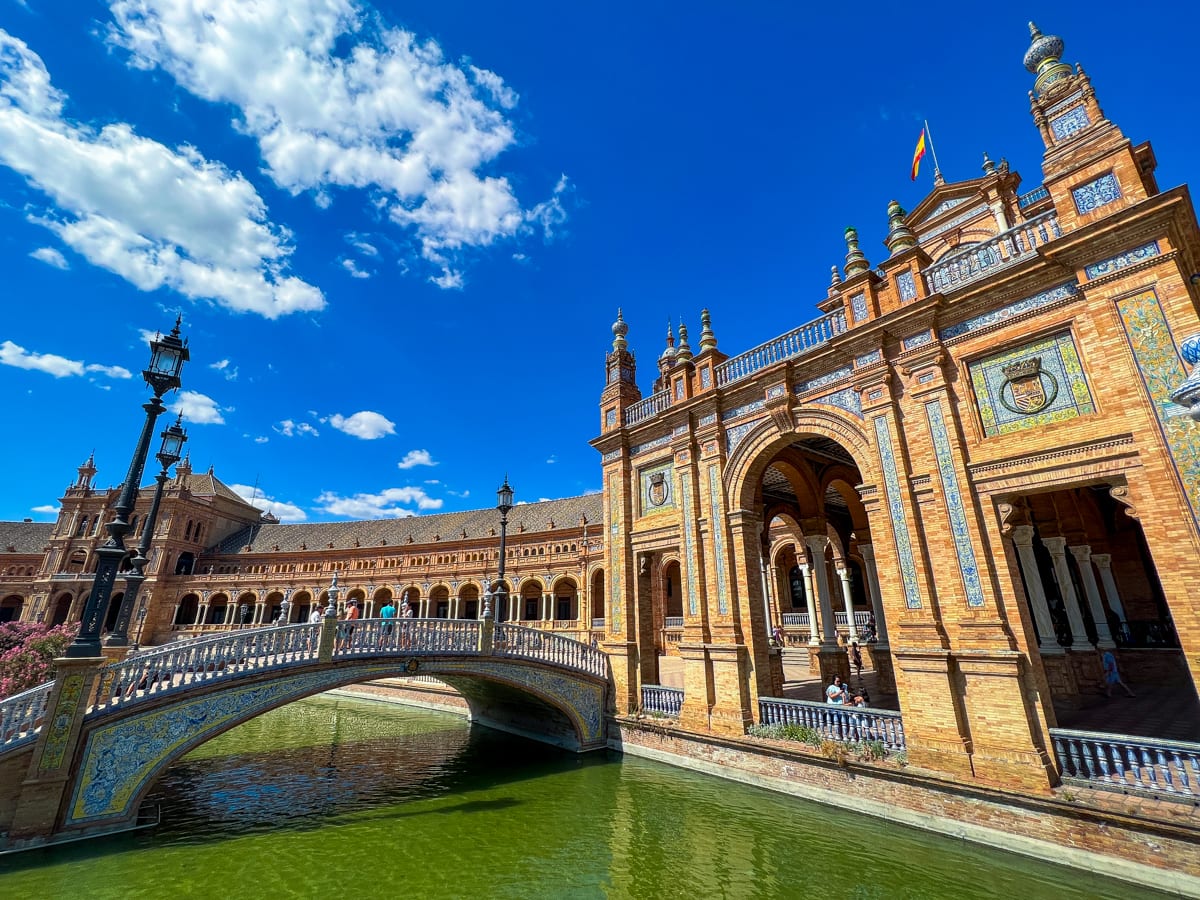
The half-circle brick building is inlaid with glazed ceramics intricately painted primarily in shades of Lapis blue and golden yellow. They depict images and symbols representing the medieval kingdoms of the Iberian Peninsula.
Representing the ancient kingdoms of Spain, four decorated footbridges cross an arc-shaped canal. Rent a small boat for a memorable spin on the water. Horse drawn carriages are also available to hire for an enchanting trot through the square.
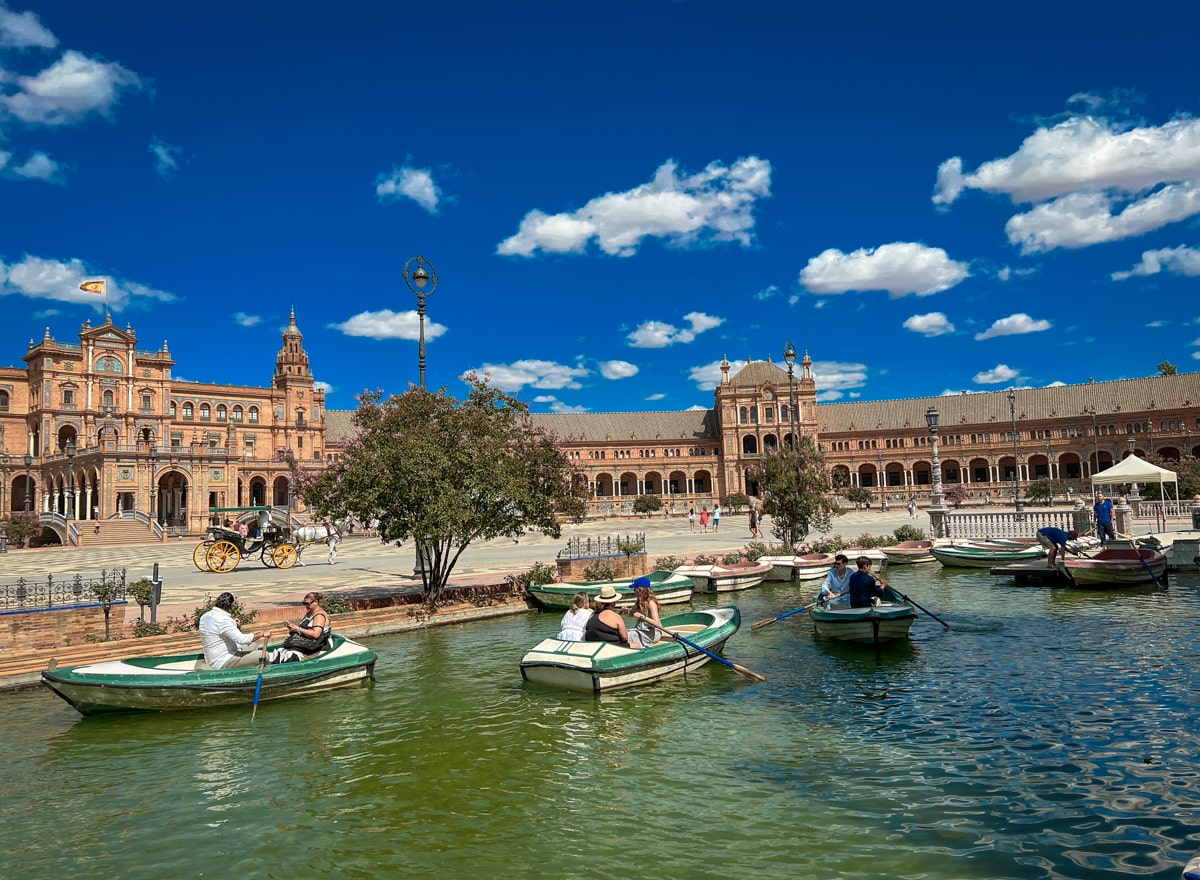
2. Parque María Luisa
Adjacent to Plaza de España, you’ll find the nearly equally beguiling Parque María Luisa (Maria Luisa Park). Filled with plenty of shade, fountains, and ponds, this park provides a welcome retreat from Seville’s hot summer days.
Previously the garden of the Palacio de San Telmo, the park was redesigned for the 1929 World Fair. The palace was built in the early 1600s as a school and later purchased as the home of a duke. The building still stands but now serves as the seat of the presidency of the Andalusian Government.
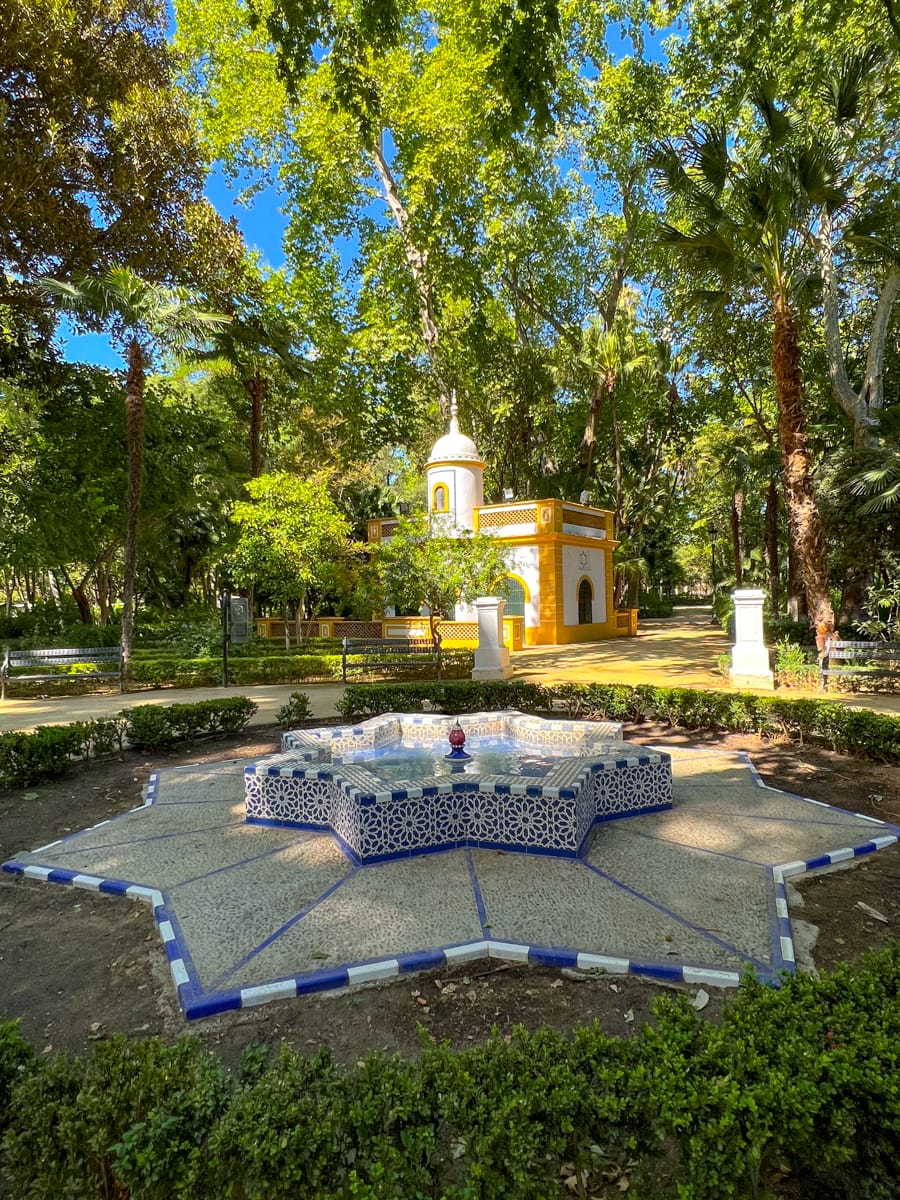
3. Flamenco
Sevilla is the birthplace of flamenco, and it is very much a part of the culture here. It truly exemplifies the passion of the city.
What to Know About Flamenco
Much of flamenco is improvised. It’s amazing to watch how the guitarist, singer, and dancer work together to create one congruent story.
Flamenco has its roots in bullfighting. Notice how the dancers use their hands or wave fans and skirts to exemplify the matador’s cape. For those of you not interested in Spain’s love of the sport, flamenco provides a peaceful way to witness the passion.
Seeing flamenco performed up close by talented artists was one of the most moving experiences for me in Spain. Don’t be afraid to share your enthusiasm with the performers by shouting, “Olé!”
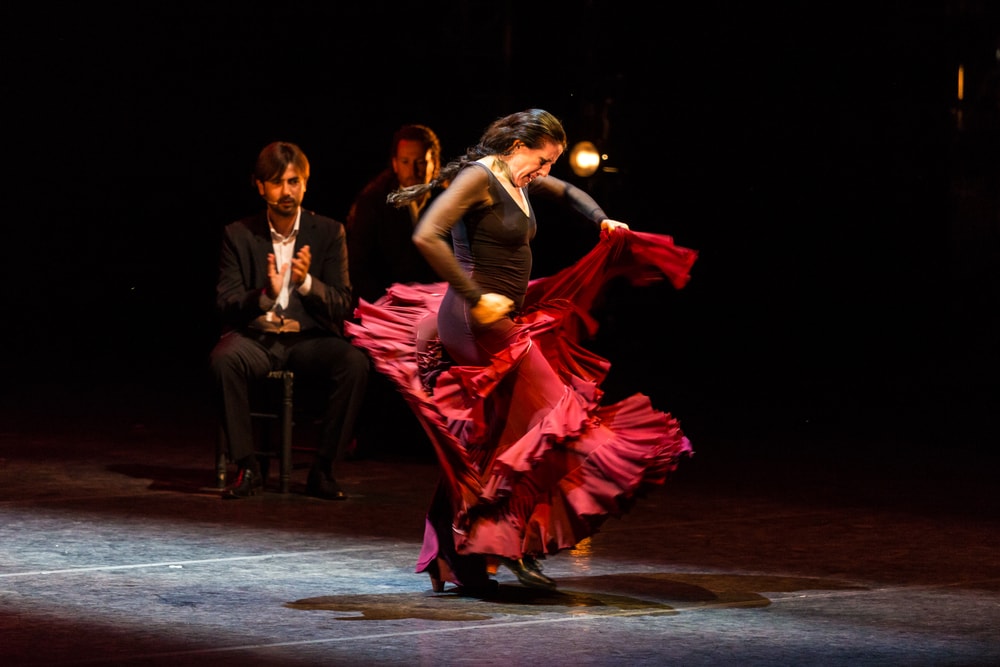
Buy Flamenco Show Tickets
If you’re going to see flamenco in Spain, then do it in Seville. Take a look at the many flamenco options available from our trusted partner, GetYourGuide. Typically, well-behaved children aged 5+ or 6+ may attend with their parents.
Sign up for a flamenco performance in advance. Choose from intimate tablaos or more elaborate stage productions. Some include drinks and/or dinner. The Triana neighborhood, across the river from many of the city’s most popular attractions, is known as the heart of flamenco and boasts many shows.
Photos and videos are usually not allowed. This allows viewers to get swept away by the performance.
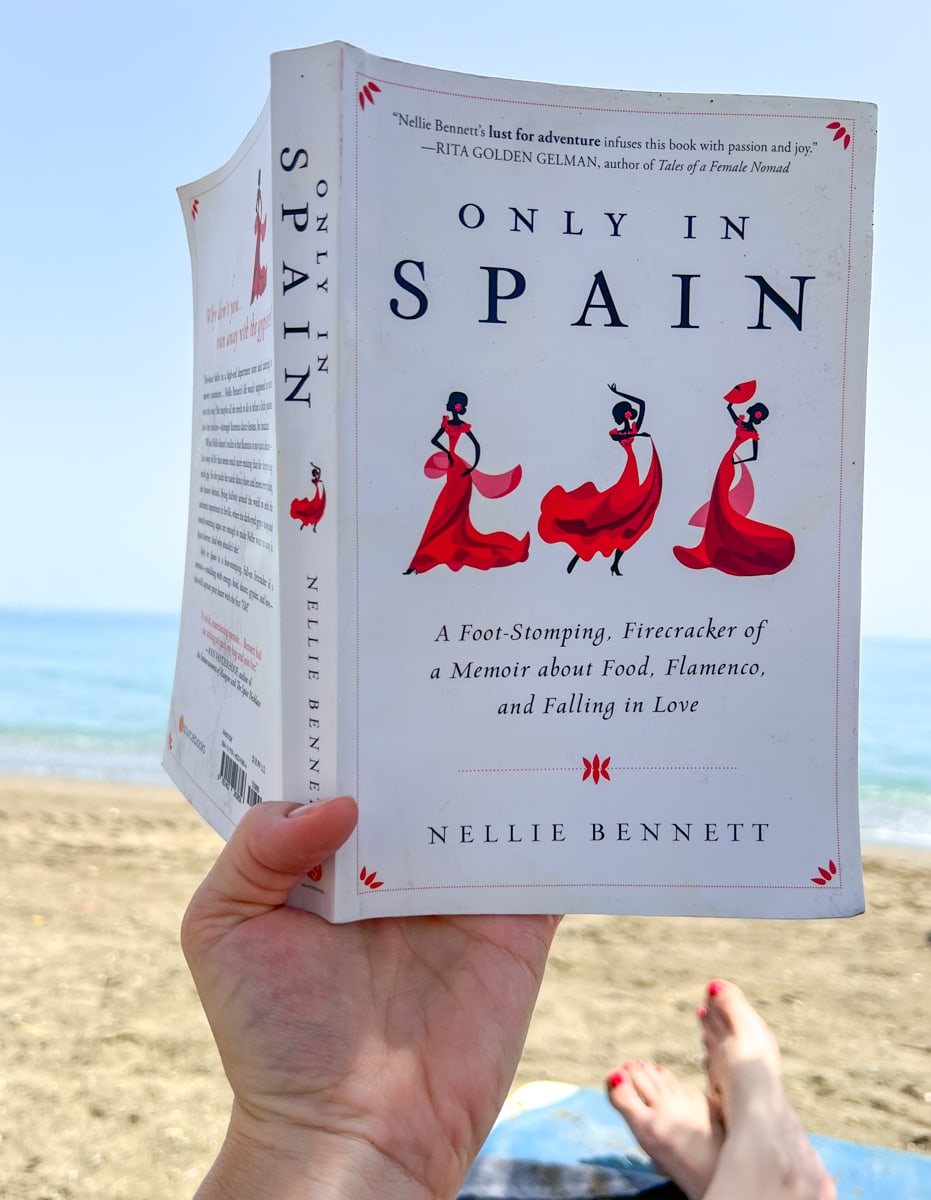
Flamenco Memoir
Before heading to Spain, I read Only in Spain: A Foot-Stomping, Firecracker of a Memoir about Food, Flamenco, and Falling in Love. Written by an Australian expat who moved to Spain to practice the art of flamenco, this book gave me insight into Spanish culture and the country’s love of flamenco in particular. Especially if you like books that take place in the destinations you visit, I recommend giving it a read.
Flamenco at Plaza de España
Keep your eyes open for free flamenco shows at Plaza de España. Local artists perform here to drum up business for paid evening flamenco shows. It’s an affordable way to get a taste of the art form. Plus, children of all ages are welcome to watch the musicians and dancers.
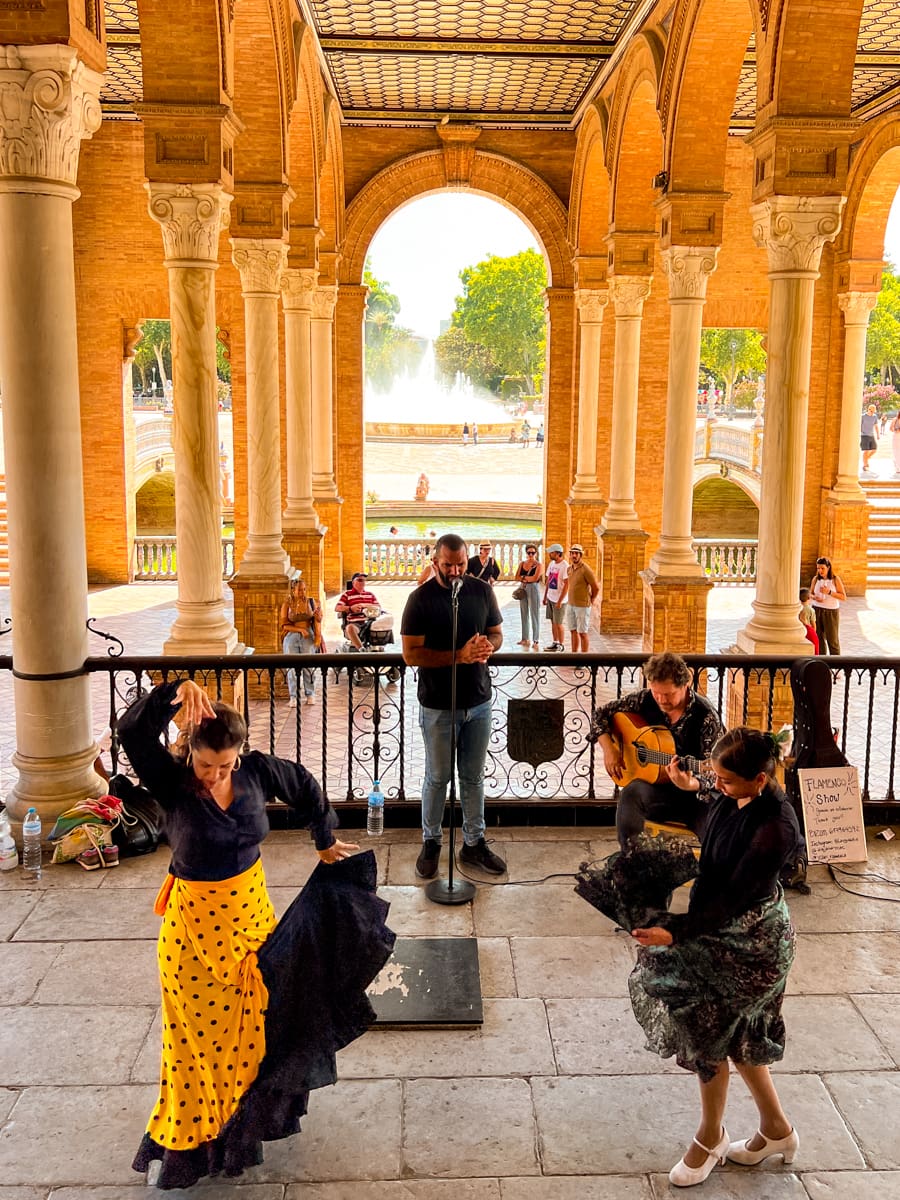
4. Royal Alcazar of Seville
La Real Alcázar de Sevilla is a must-see for any family trip to this charming Spanish city. Although it’s a Christian monument, the Royal Alcazar was built in the style of Islamic architecture. Expect ornate repeating designs plus lots of interior courtyards and fountains throughout.
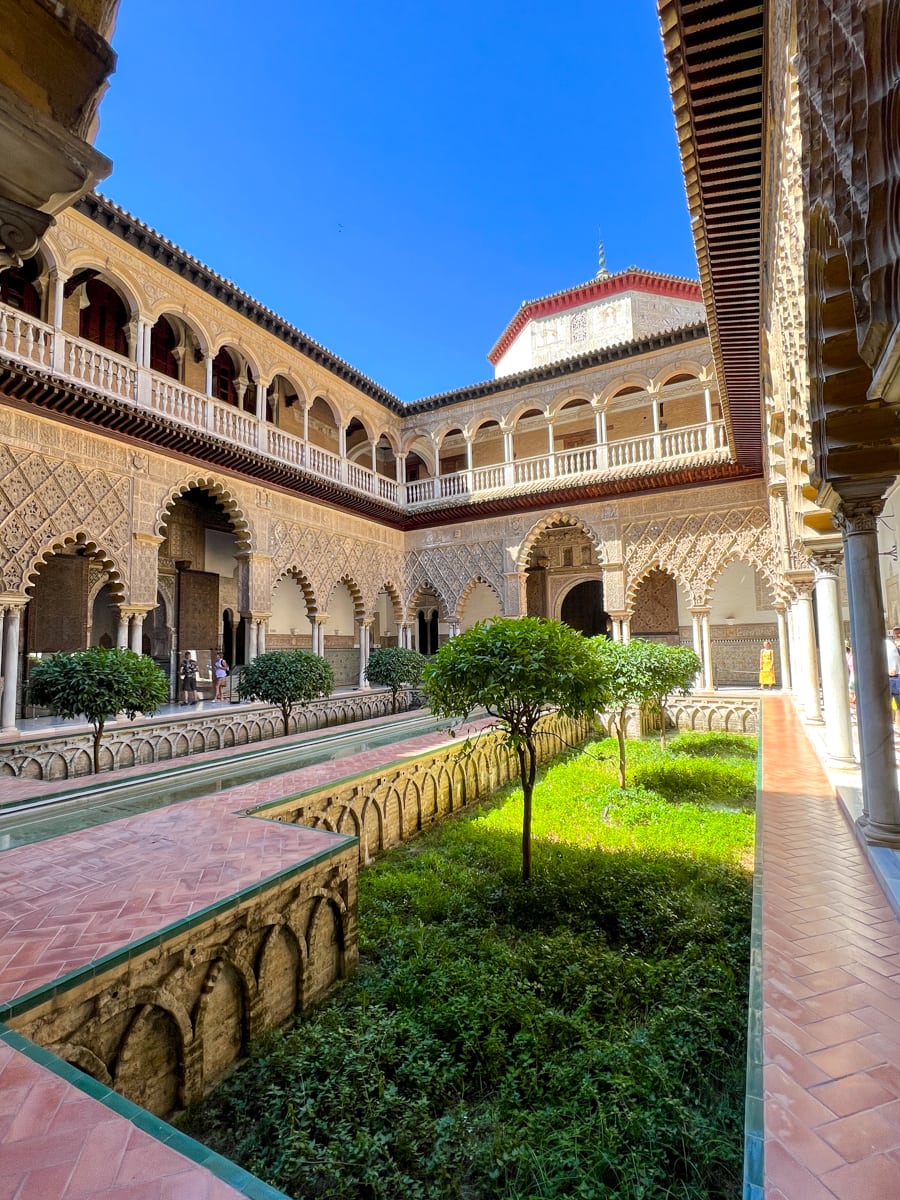
Different from other Moorish (Spanish Muslim) buildings, however, you can find some images of animals and plants in the designs. Usually, in Muslim architecture, these elements are absent since it is believed that only God can create such living beings.
This royal palace was built on the site of a former Moorish castle by a Christian king, Pedro I. The Royal Alcazar’s original builder is also known as Peter the Cruel or Peter the Just.
Look for secret passageways built into the structure to help this paranoid king spy on his half-brothers and others. King Pedro was so fearful his brothers would assassinate him to steal the throne, he killed one of them within the palace walls. It turns out, he was right to be worried because his reign ended 19 years after it began when he was murdered by another brother, Henry II.
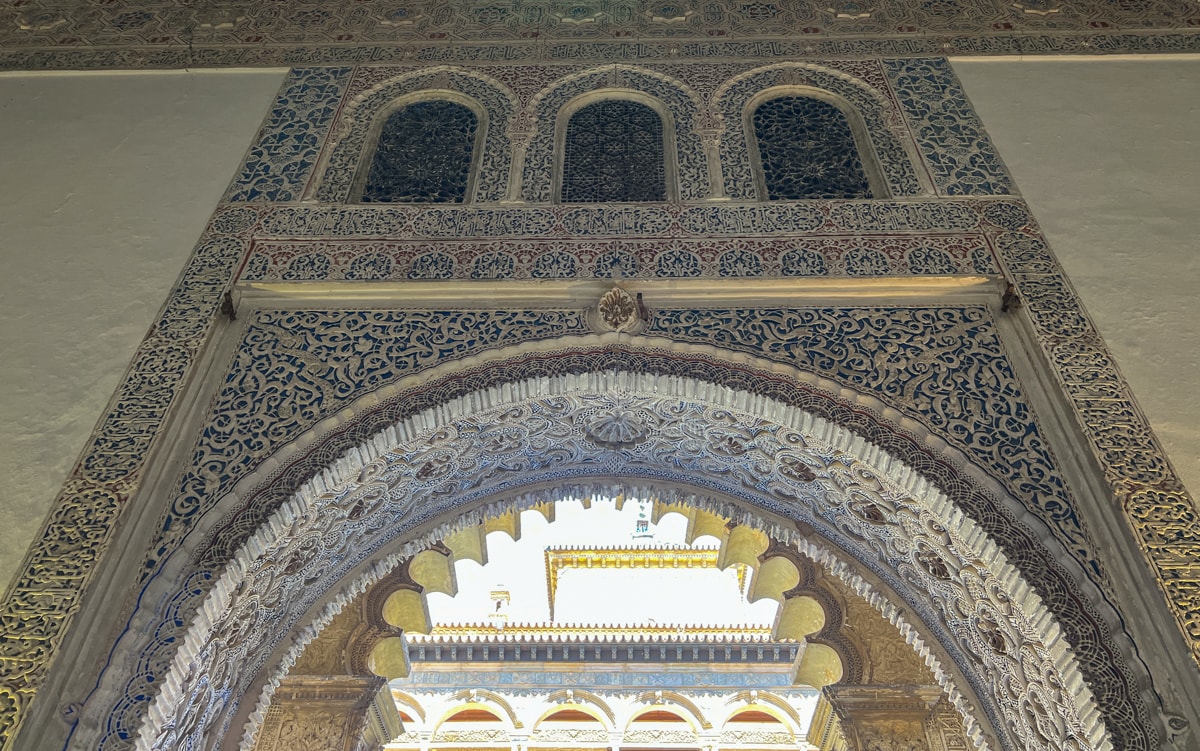
5. Alcázar Gardens
Perhaps even more impressive than the Real Alcazár are the 15 acres of beautiful gardens that surround it. Keep track of where you wander, though, it’s easy to get lost in this labyrinth of vegetation.
The Alcazár Gardens astonish the senses with shrubs, fountains, palm trees, and colorful flowers. In fact, the lush gardens contain more than 170 species of plants from around the world.
Also, be on the lookout for peacocks with their brilliant plumage plus peahens and their chicks. (See my video below.)

The bustling onsite café provides a nice spot to rest and serves quite good coffee and pastries. Friendly resident ducks may visit your table to beg for treats.
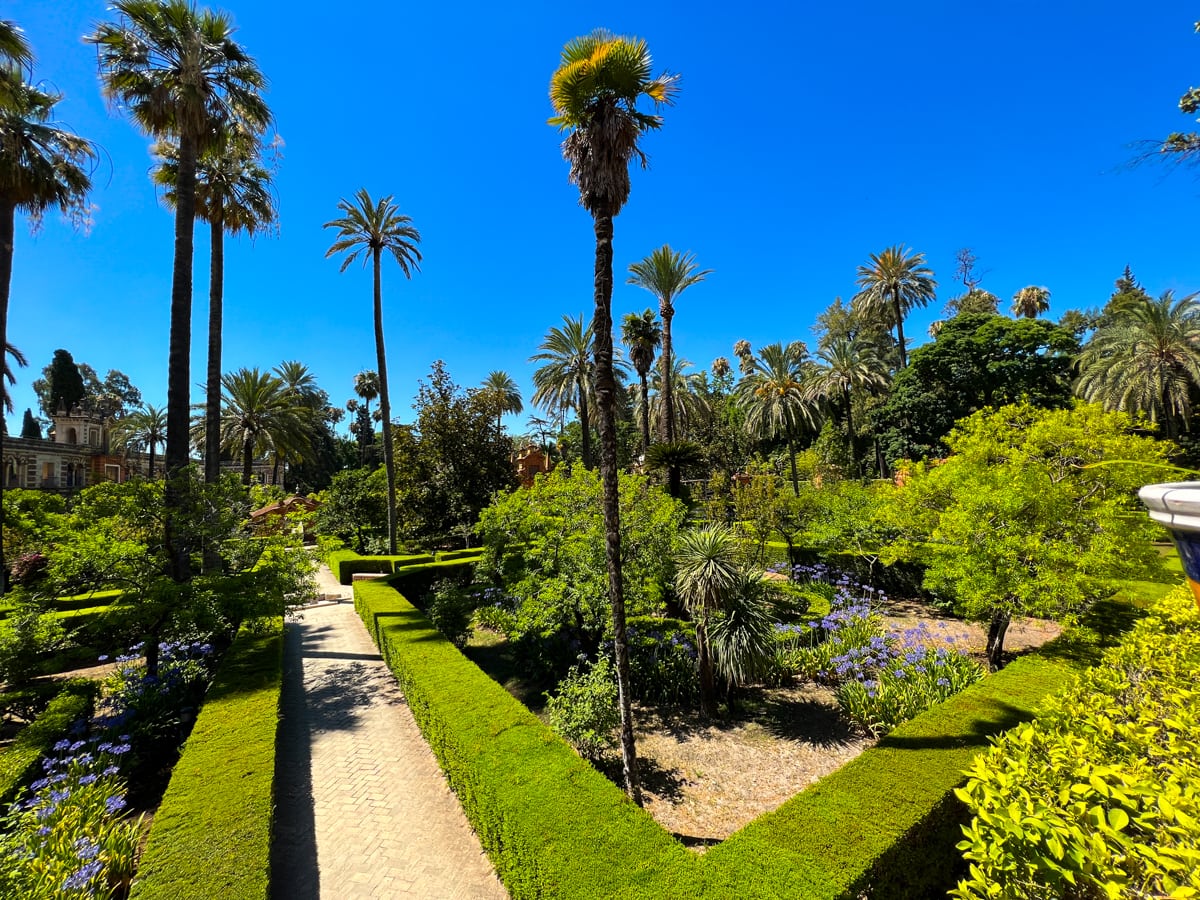
6. Catedral de Sevilla
Seville Cathedral is renowned as the third or fourth largest church in the world, depending on who you ask. It’s also the undisputed largest Gothic cathedral anywhere. The church features no less than 80 chapels and boasts Christendom’s largest altarpiece. It’s registered as a UNESCO World Heritage Site as well.
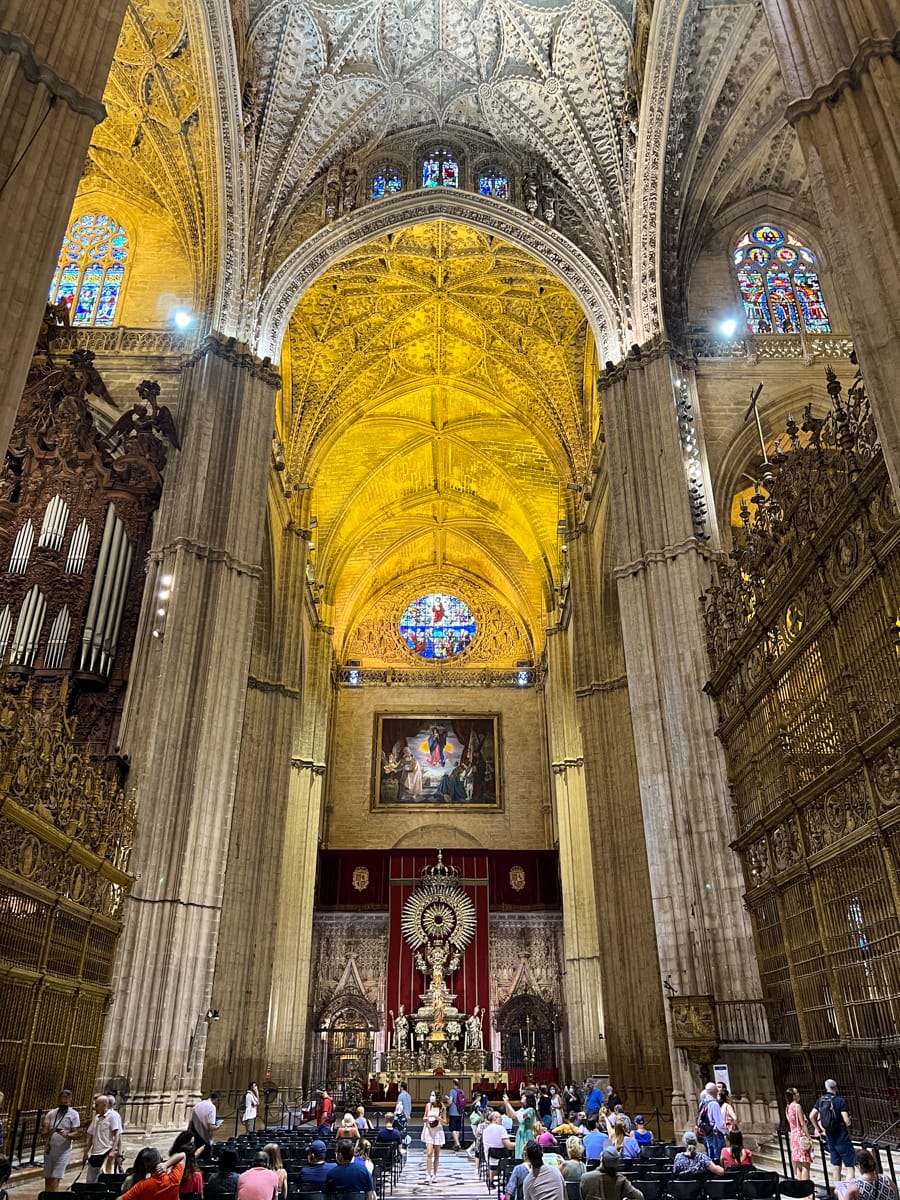
In addition to its grand size, the Cathedral of Seville is home to the remains of Christopher Columbus. Well, it’s home to some of the famous Spanish explorer’s remains. An elaborate tomb honoring Columbus is housed here but after DNA testing, it was determined that only about 20 percent of his body is contained within it. The rest is likely in Santo Domingo and Cuba. Still, you will want to take a photo of the ornately decorated burial chamber.
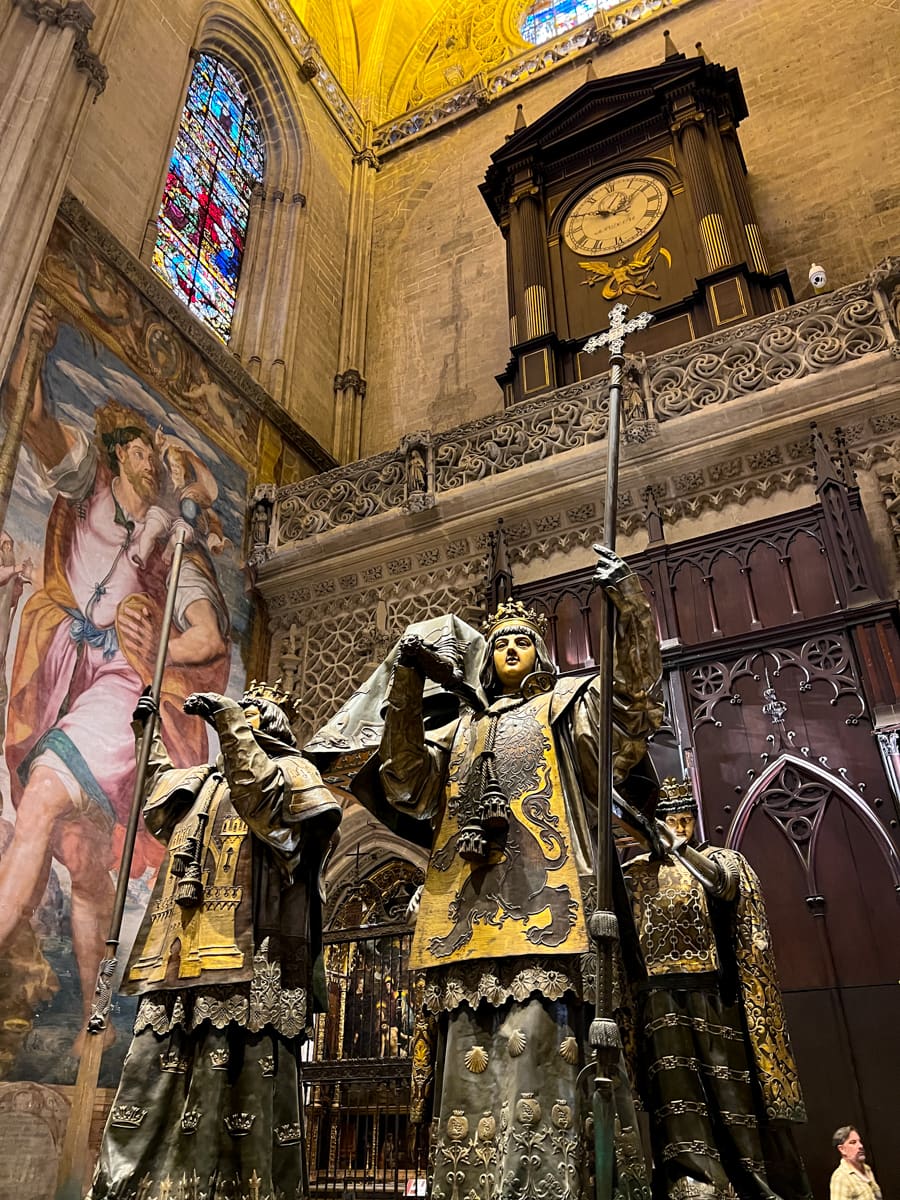
7. La Giralda
La Catedral de Sevilla’s pretty bell tower, La Giralda, was originally built in 1195 as the minaret of the Aljama Mosque. Girar means to turn in Spanish and the tower is named after the weather vane at its top, according to Andalucia.com.
Rather than steps, the tower includes 35 ramps that once carried sultans on horseback to the top to take in the scenery. Climb to the top for magnificent views of the city.
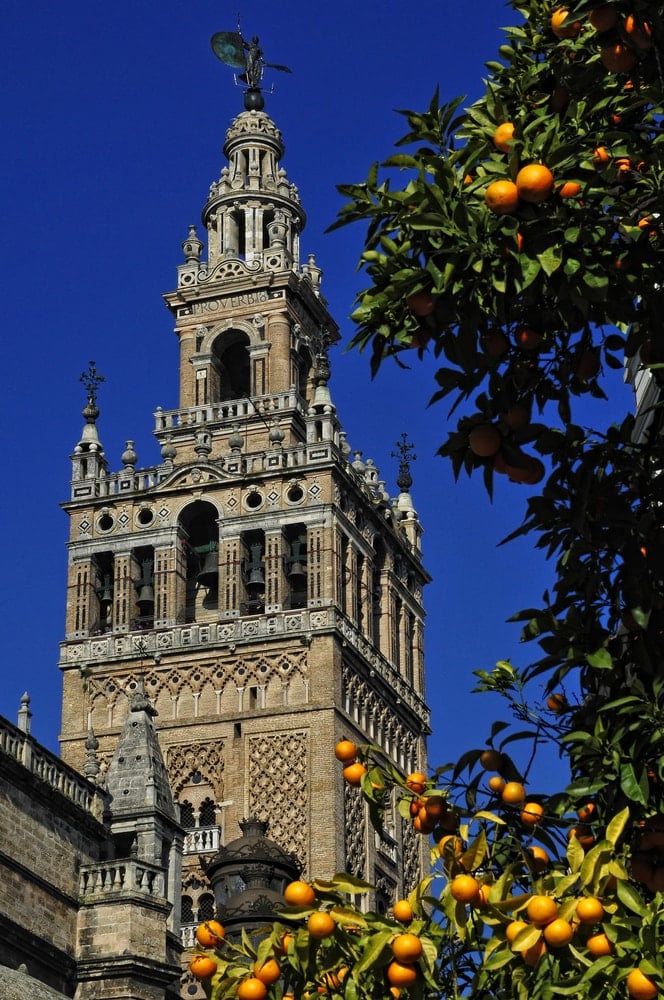
I recommend doing as we did and booking a guided 3-hour tour of the Royal Alcázar, the Alcázar Gardens, La Catedral de Sevilla, and La Giralda with our trusted partner, GetYourGuide.
You’ll learn more about Seville’s history and culture from a local expert than when going it alone. Plus, you get free time to explore the gardens and climb the tower on your own. Otherwise, be sure to buy tickets online well in advance.
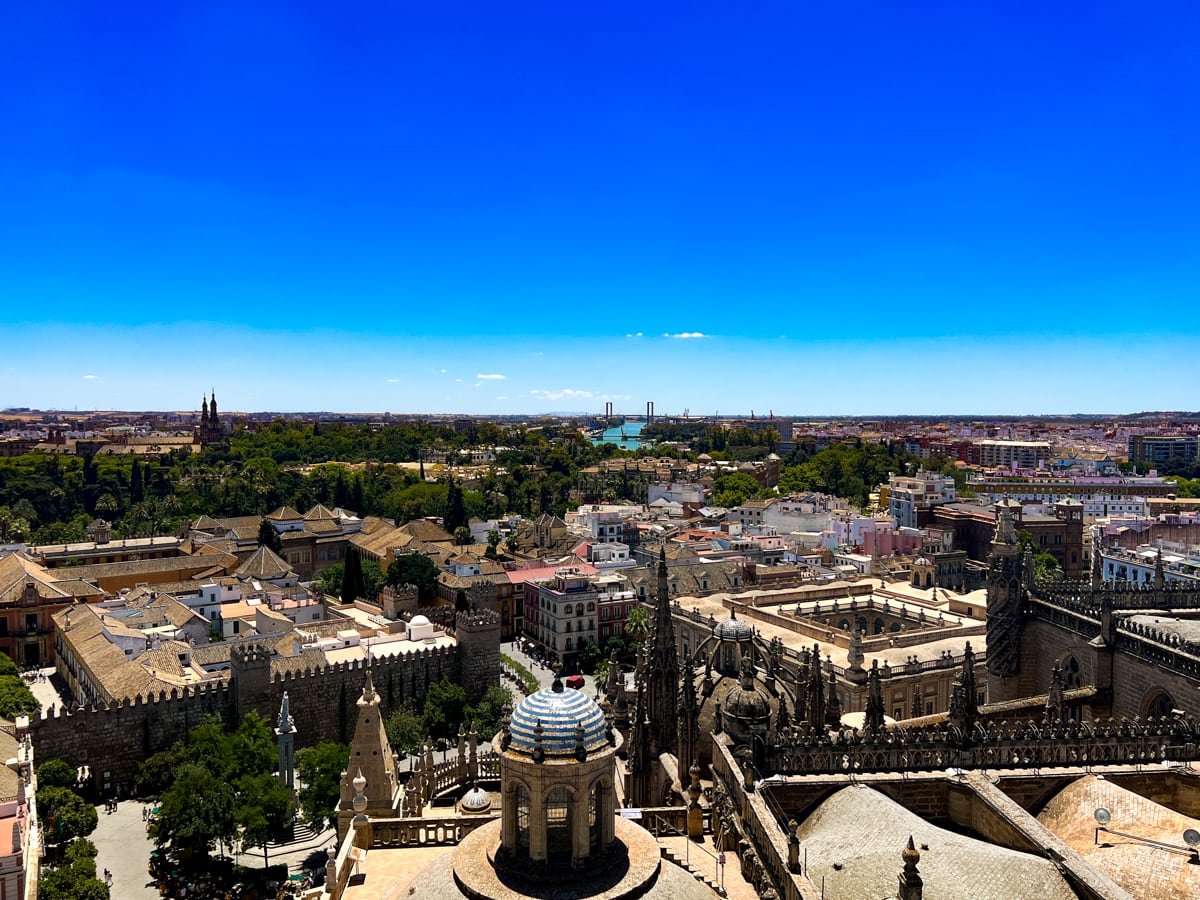
8. Churros con Chocolate
To reward kids for good behavior while touring Seville’s sites, treat the family to churros con chocolate. These golden puffs of pastry are served with a rich, but not overly sweet, chocolate sauce for dunking or drinking. The fried dough is light as a cloud in the center, with a slightly crisp shell. Basically, they’re heaven for children (and parents!).
Technically churros are considered a breakfast food in Spain. You can, however, indulge in churros con chocolate from 7:30 am to 9 pm at Bar El Comercio in the heart of the city. This café was founded in 1904 and is renowned as one of the best places in Seville for churros. These sweet treats are made to order and served hot. YUM!
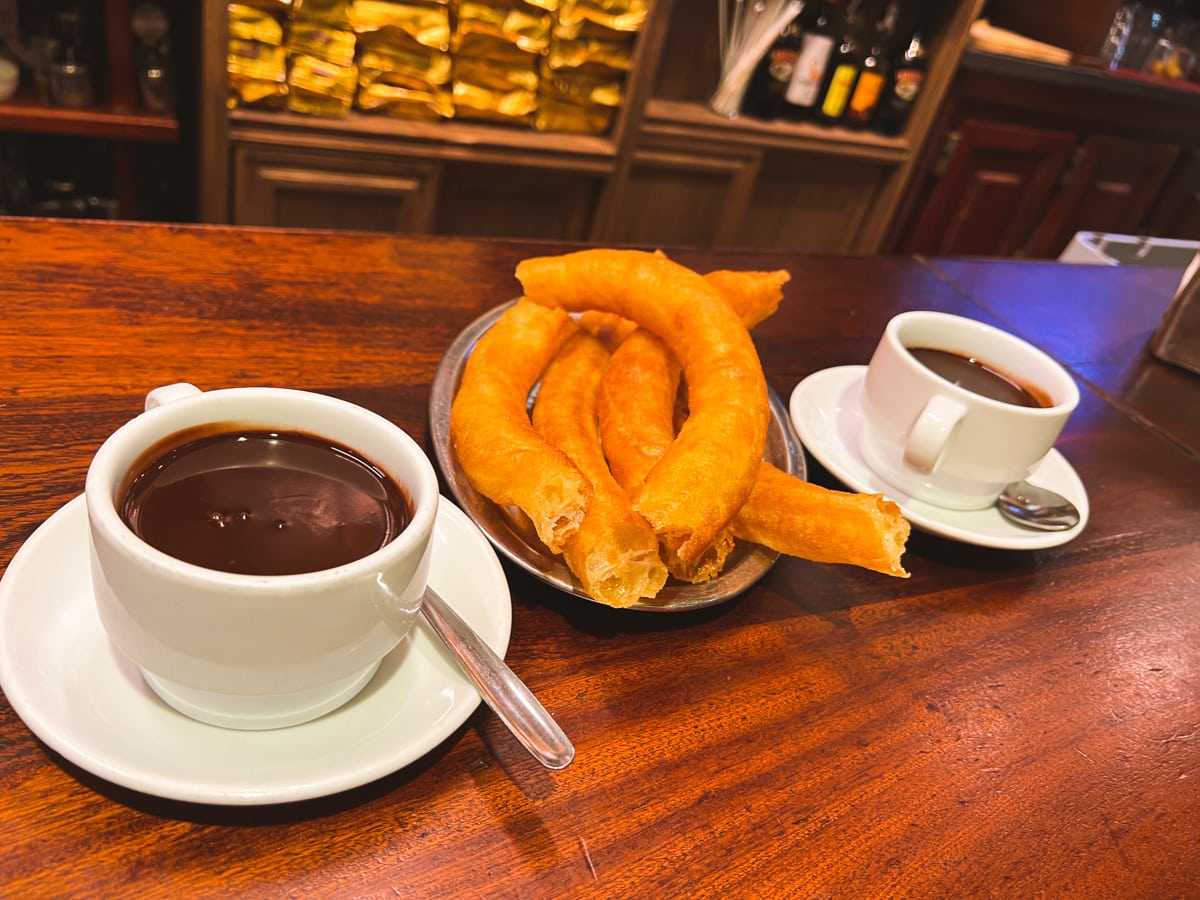
9. Guadalquivir River Boat Cruise
Rio Guadalquivir is 408 miles long and is the only major navigable river in Spain, emptying into the Atlantic Ocean on the Gulf of Cádiz. The river launched Magellan’s famous expedition in the 16th century.
Book a 1-hour Guadalquivir River Boat Cruise for a unique and relaxing way to take in the city’s scenery. Cruise under the famous Puente de Triana and float past monuments like the Torre del Oro watchtower and Plaza de España towers.
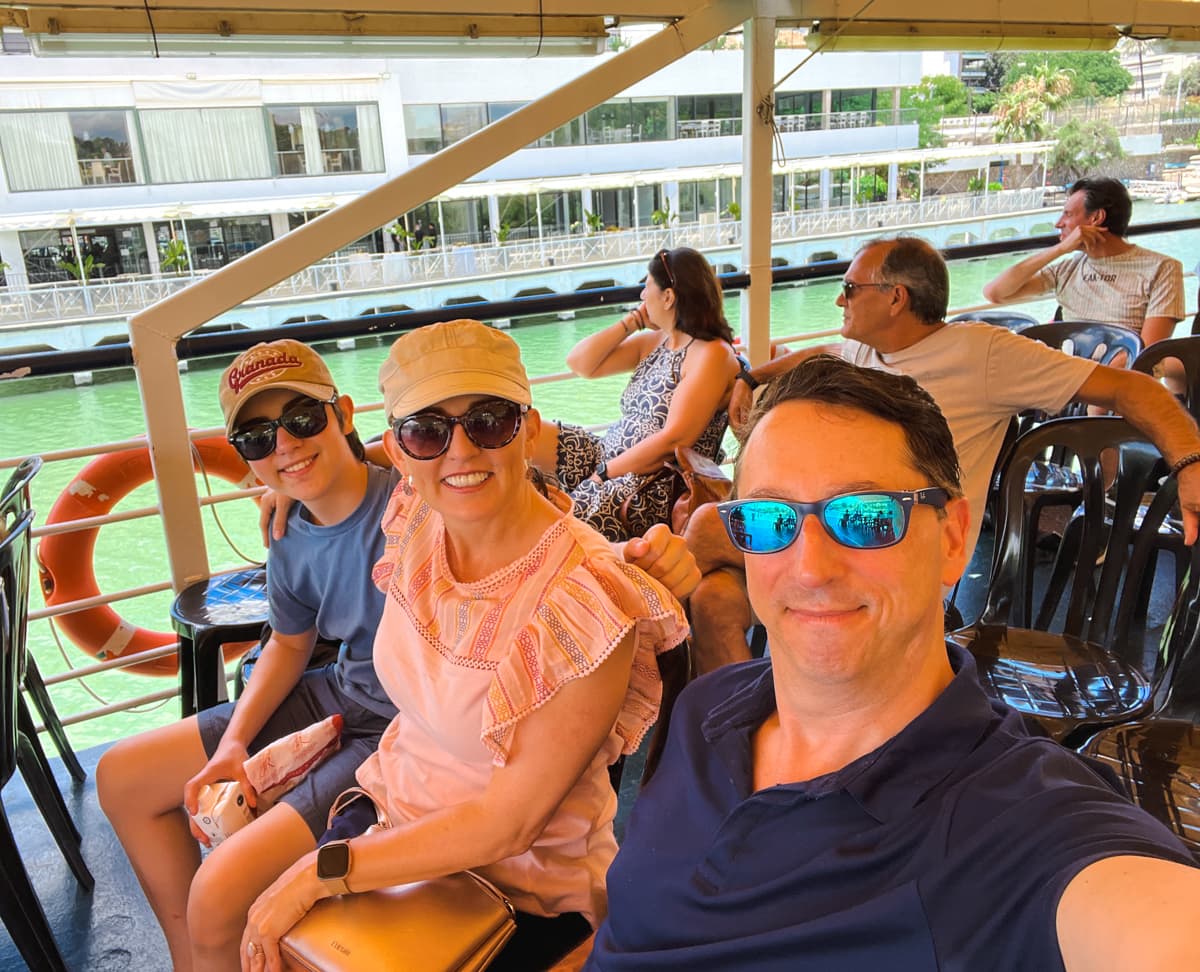
10. Triana Bridge
La Puente de Isabel II, or Triana Bridge, spans the Guadalquivir River. This elegant overpass connects the Triana neighborhood with central Seville.
The metal arch bridge was built in 1852 during Queen Isabel II’s reign. Some mistakenly believe that the Puente de Triana was created by Gustav Eiffel of Eiffel Tower fame. The truth is, though, that it was designed by two other French architects, Gustavo Steinacher and Fernando Bernadet.
Guadalquivir River slices Seville in two segments. Due to this separation, Triana on the west bank has maintained a distinct character from the rest of the city. Plan to cross this bridge on foot to reach the colorful Triana neighborhood at least once during your stay in Seville with kids.
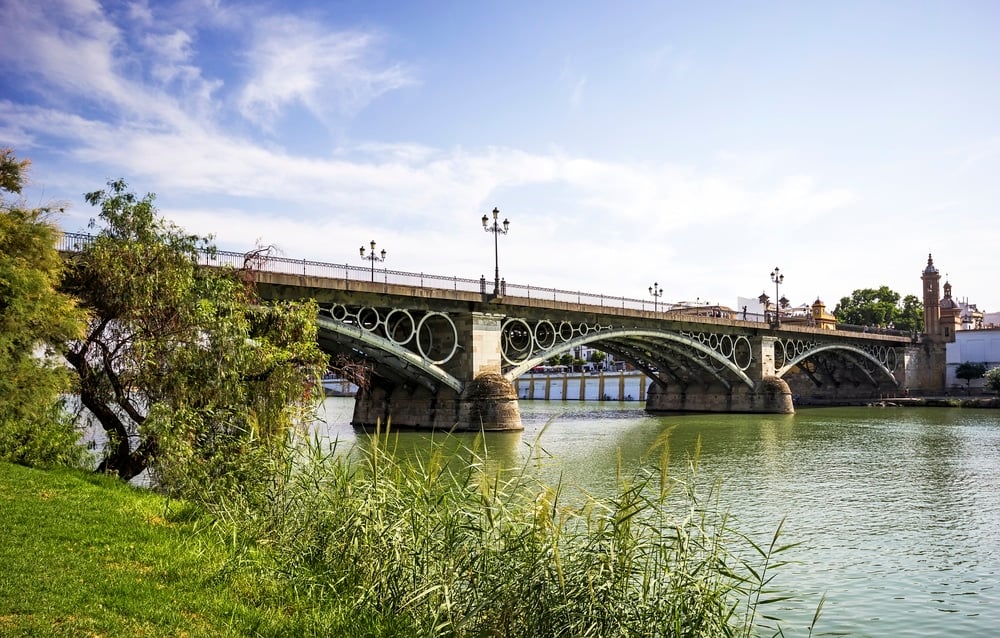
11. Triana Market
Triana’s unique working-class neighborhood is home to many flamenco shows and tapas restaurants. It’s also known for its vibrant market.
On just the other side of the famous bridge, explore the bustling Mercado de Triana. Wander past displays of colorful produce, sausages, cheeses, fresh fish, and more.
Pull up a seat at one of Triana Market’s tapas bars or cafés for a quick bite to eat. Expect simple fare like sandwiches, pastries, and tortillas de patatas (traditional Spanish omelets made with potato and egg).
Foodie families should sign up for a GetYourGuide Triana Market tour with tastings. The 2.5-hour tour explains the history behind Andalusian and Spanish cuisine. Taste the flavors of Seville with samples of Iberico ham, local cheeses, olives, seasonal fruits, traditional sweets, and more.
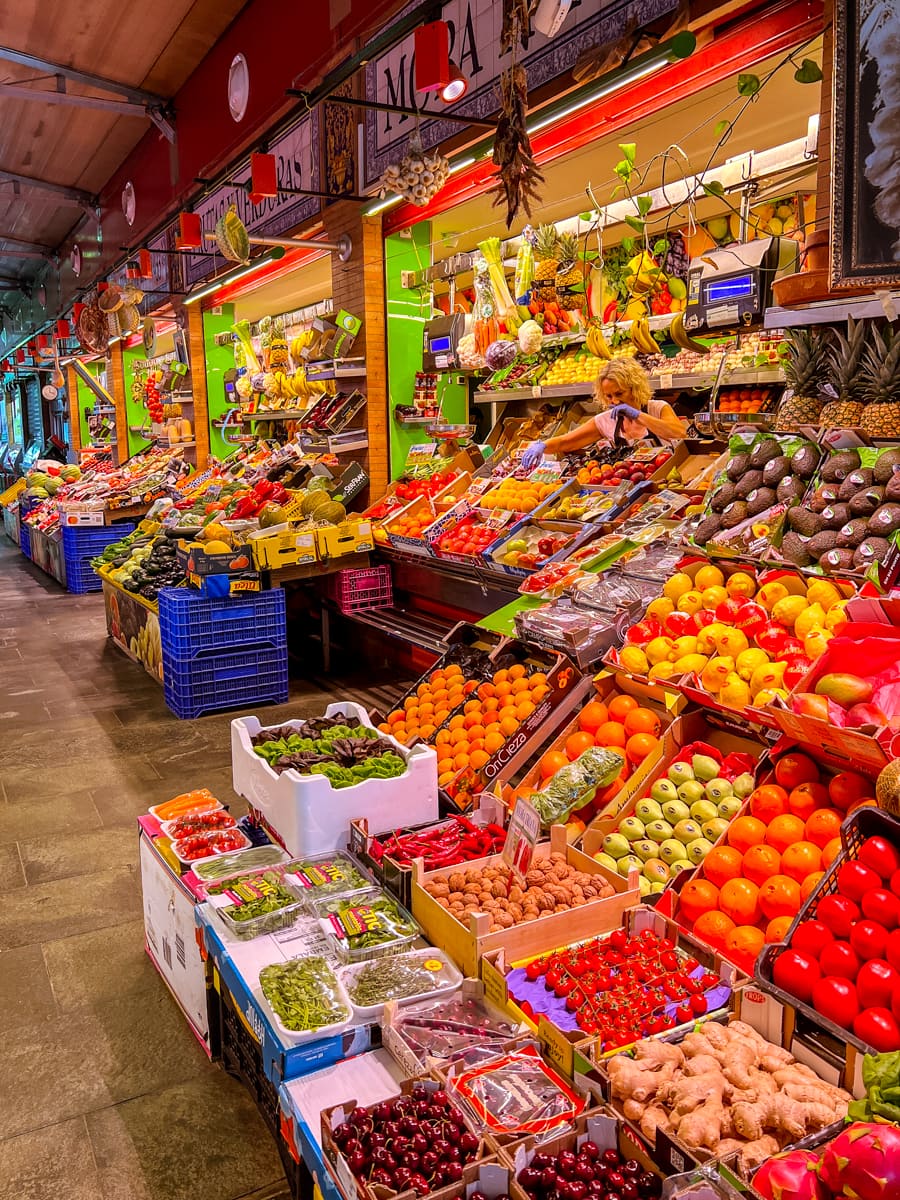
12. Ceramics of Seville
Seville is known for its azulejos, or glazed colorful tiles. While in Triana, be sure to peruse some of the city’s finest ceramics.
True fans can head to the Centro Cerámica Triana (Triana Ceramic Museum). This attraction exhibits hand-painted tiles, pottery, and kilns in a preserved ceramics factory. This museum, however, will likely hold little interest for children.
Instead, walk (carefully) through the ceramics shops surrounding the museum in Triana. The artistry is amazing, and prices are a fraction of what they’d be for similar quality works in the U.S. I particularly liked Cerámica Santa Ana.
You can have items shipped home or do as I did and wrap your ceramic souvenirs well for safe packing in your suitcase.
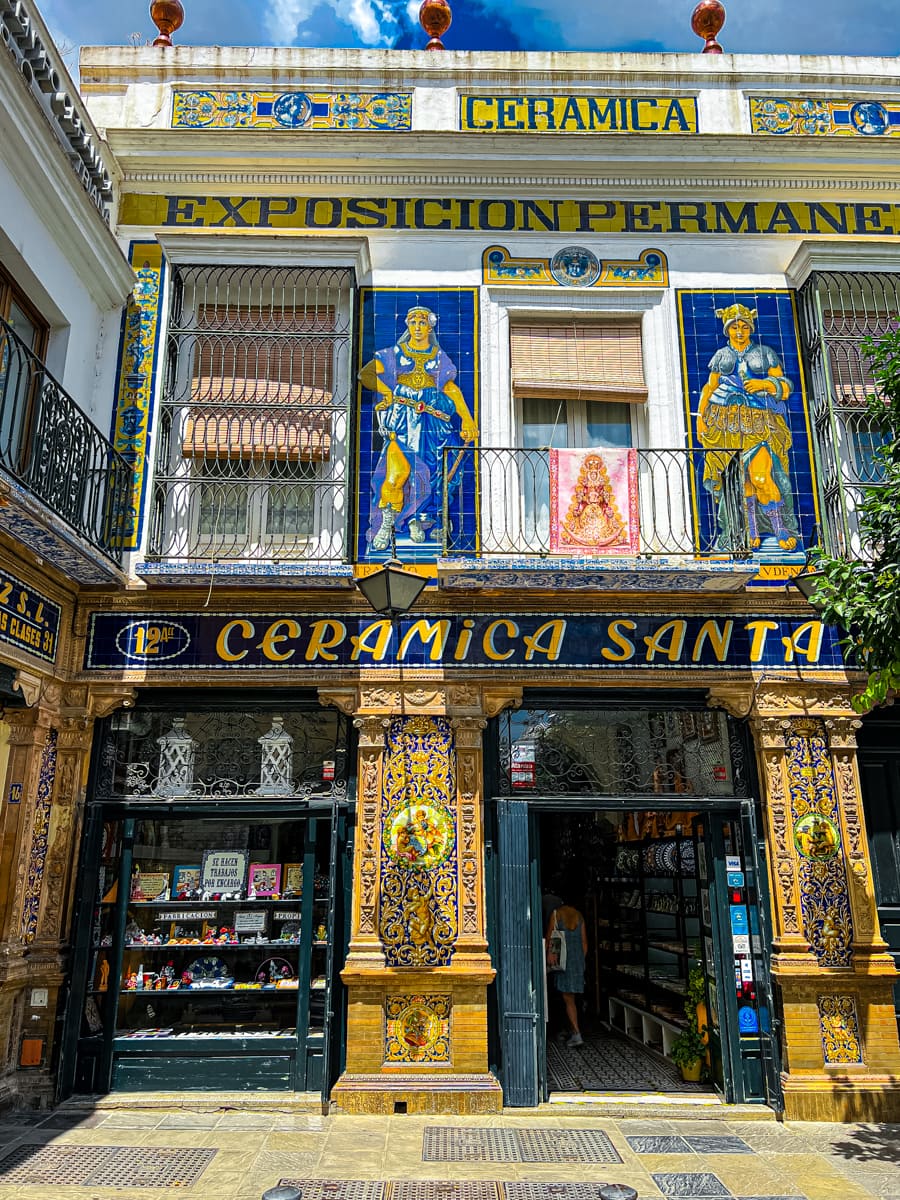
13. Evening Paseo
In Spanish, paseo means to leisurely walk. Spain’s evening paseo is when locals and visitors stroll along city boulevards to take in the scenery, socialize, and enjoy drinks and tapas late into the night.
As with most things in Spain, paseo is a family affair. So, expect to see even younger children out late strolling with their parents. This is especially true on weekends in summer months.
Many flock to the water for a pleasant stroll. Walk along the banks of the Guadalquivir for a pretty palm-lined view along Paseo de Las Delicias, which means, “Walk of Delights.” Next, cross the Puente Isabel II to reach Triana. Although lovely anytime, Triana Bridge is particularly pretty when lit at night. Then, stroll along Calle Betis, Triana’s lively waterfront street lined with shops and quaint eateries.
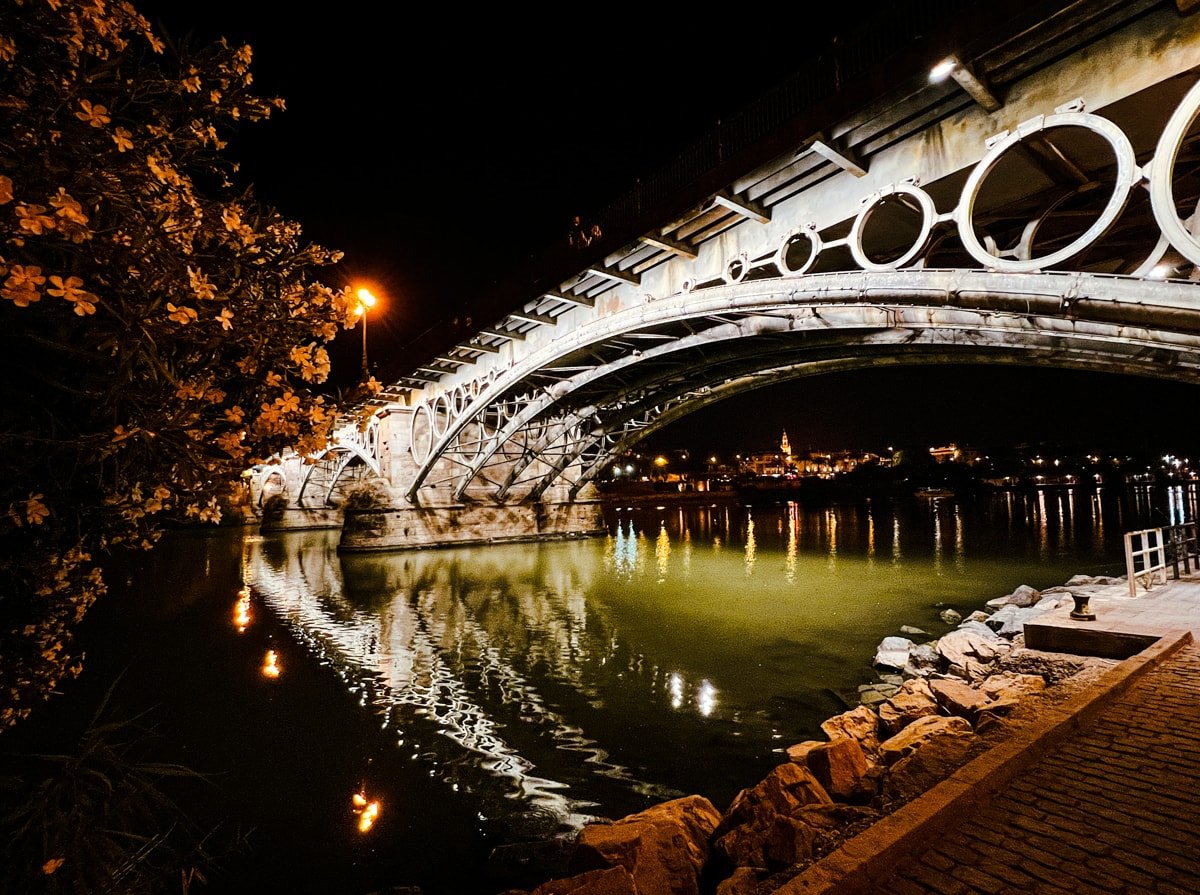
14. Isla Mágica Theme Park
You don’t go to Spain to visit an amusement park. But your kids sure hope you’ll include Isla Mágica Theme Park in your Seville itinerary!
In addition to more than two dozen rides, your entire family can enjoy carnival games, onsite restaurants, and live shows with music and special effects. Plus, the onsite Agua Mágica water park provides opportunities to cool off on steamy Seville summer days with numerous water slides, a wave pool, and a lazy river.
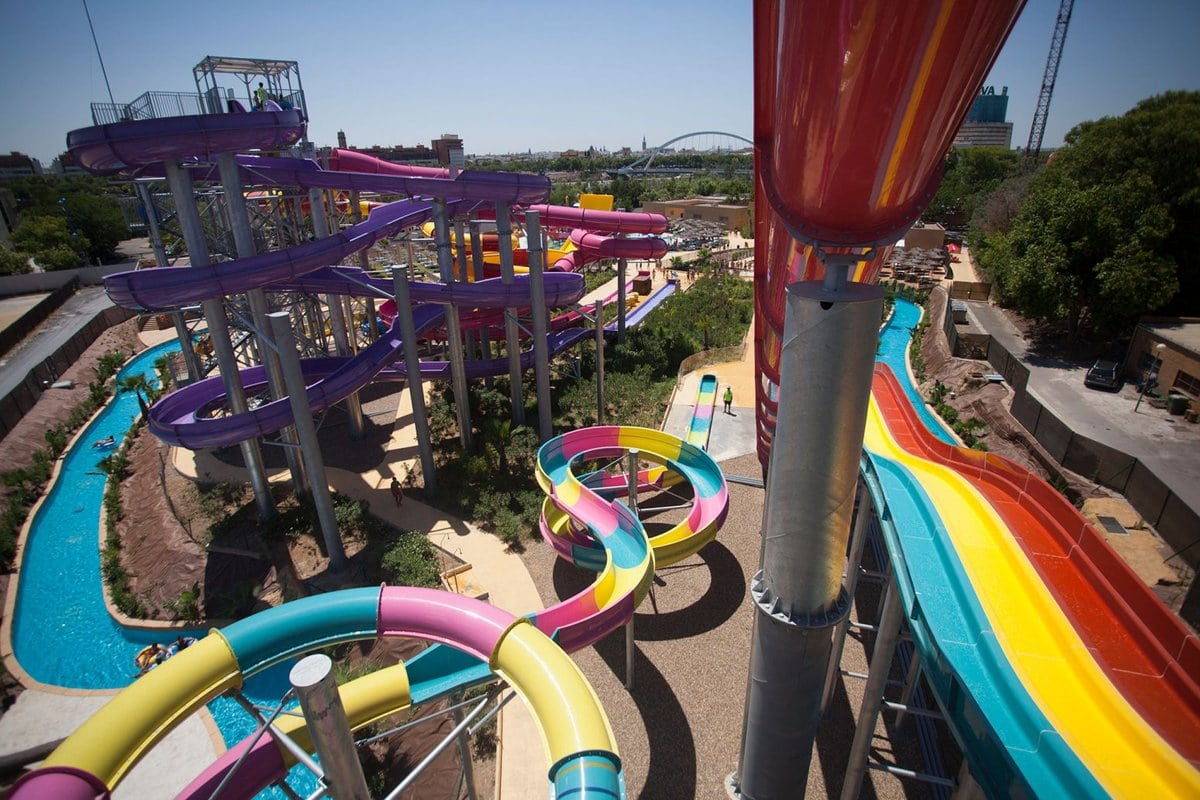
Isla Mágica presents six themed lands from the Age of Discoveries in the 16th and 17th centuries. Thrill-seeking older kids and teens will appreciate the park’s only full-sized roller coaster, Jaguar, which reaches speeds up to 52 miles per hour. Other highlights include the Anaconda log flume ride and an interactive Capitán Balas pirate-themed dark ride.
If you’re visiting Seville with young children, then you’ll love La Fuente de la Juventud (The Fountain of Youth). This land was designed with little ones in mind. Look for the Dancing Caiman water roller coaster, the Chrysalis caterpillar-themed carousel, a Ferris wheel for the whole family, and more.
This urban theme park is located on the Isla de la Cartuja on the banks of the Guadalquivir River. It’s open most days from April through October, with varying hours. Buy your skip-the-line Isla Mágica tickets in advance.
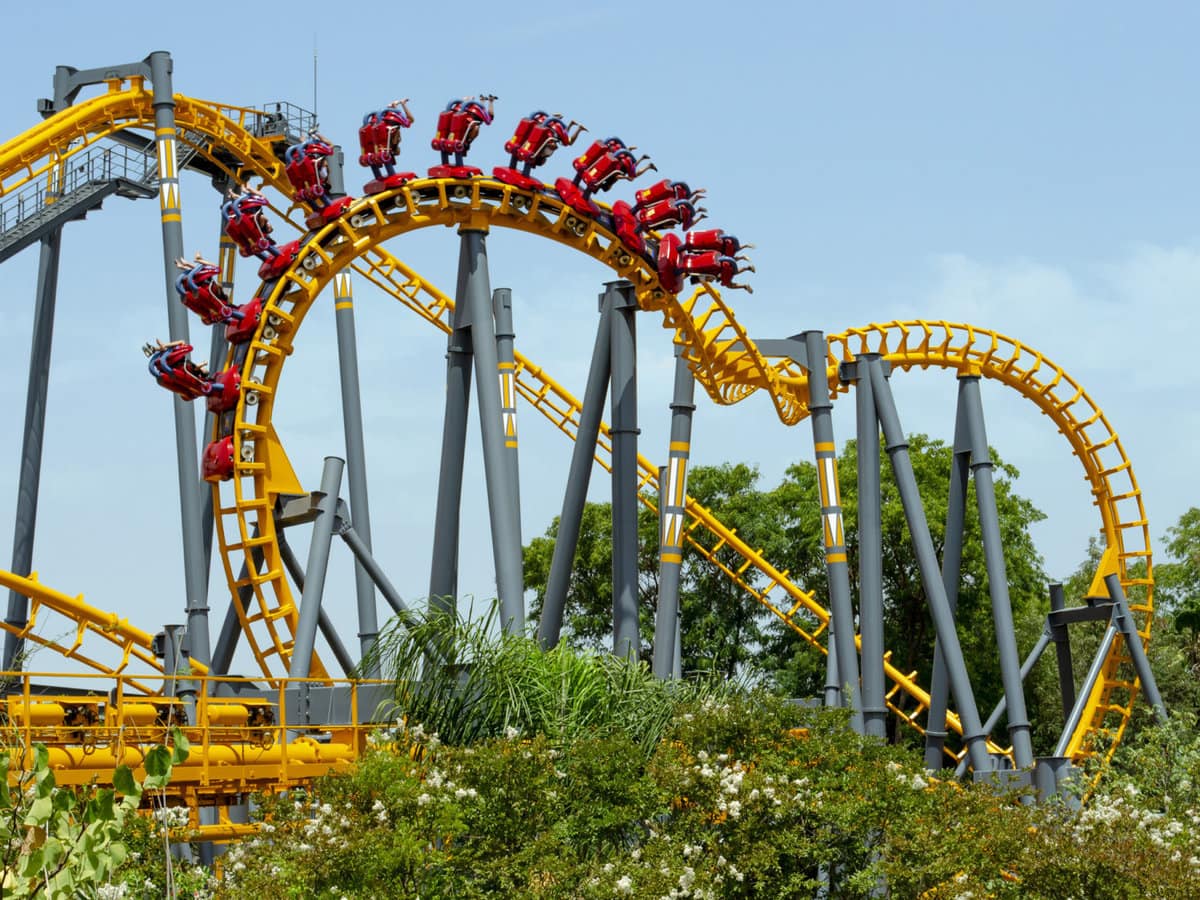
15. Tapas
While in the capital of Andalusia, where tapas were invented, you must eat tapas! These savory Spanish snacks make a great evening meal option when traveling with children, who tend to eat smaller portions anyway.
In some places in Spain, like Granada, tapas are always served free of charge with the purchase of a beverage. In Seville, tapas bars will bring you a little nosh like olives with your cocktails and mocktails but for something more substantial, ask for a menu. Order an array of goodies for the table that will appeal to everyone to keep bellies full and fights to a minimum.
Tapas are typically served after the Spanish workday, around 8 or 9 pm. Eating at this “early” time is easier for us tourists than holding off for a full dinner a couple of hours afterward. Although mealtimes in Spain are later than in most countries and can be confusing, you can almost always find something to eat in Seville no matter the time of day.
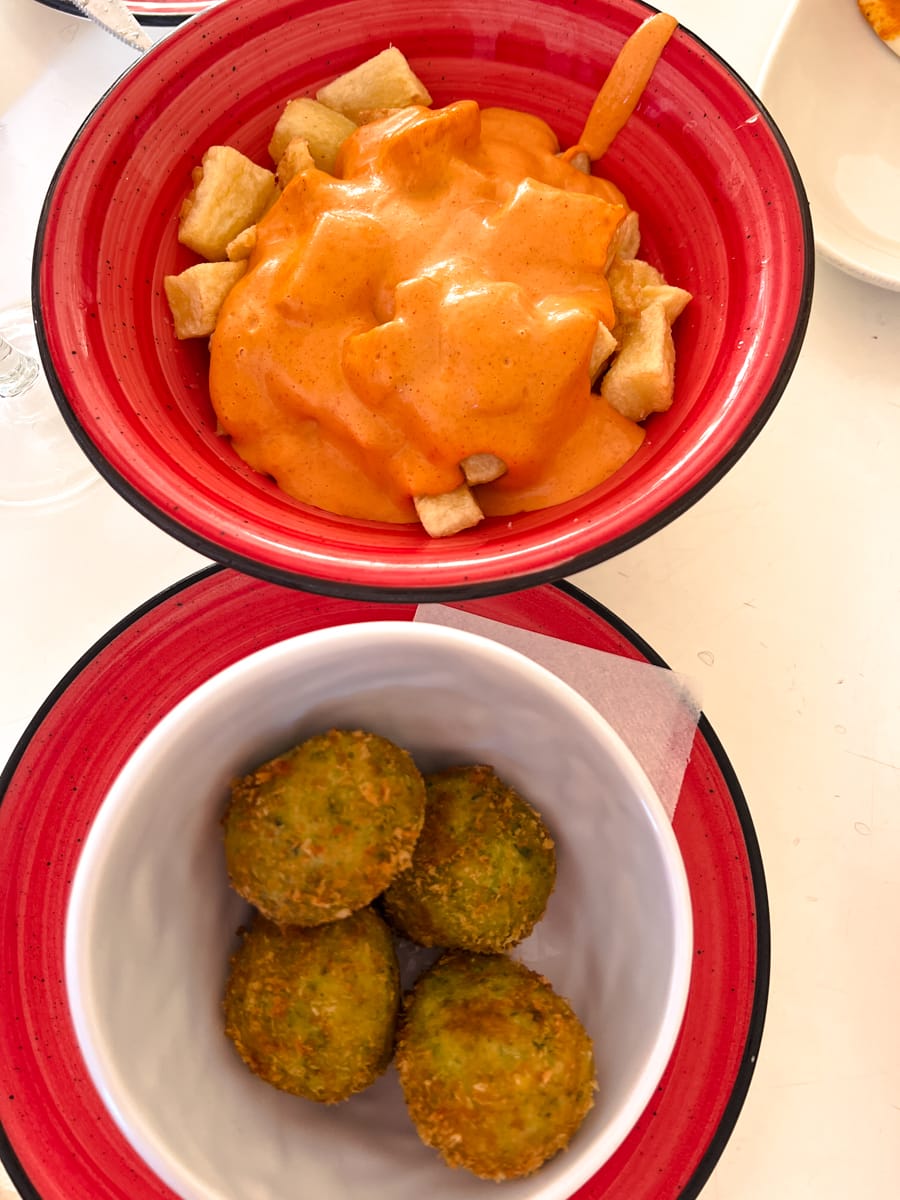
Kid-Friendly Tapas
Got picky eaters? Me too! Below are some traditional tapas suggestions that might tempt your offspring.
- Pescado Frito or Calamari Frito (fried fish or fried squid)
- Croquetas (croquettes/fried fritters — order stuffed with cheese or vegetables for vegetarians)
- Olivos (olives)
- Queso Manchego (Manchego cheese, a crowd-pleaser)
- Jamon Iberico or Jamon Serrano (Spanish cured ham)
- Albondigas (meatballs)
- Patatas Bravas (spicy fried potatoes — these are usually pretty mild, but you can ask for the sauce on the side)
To sample tapas with a local culinary expert, sign up for a family-friendly walking tapas tour.
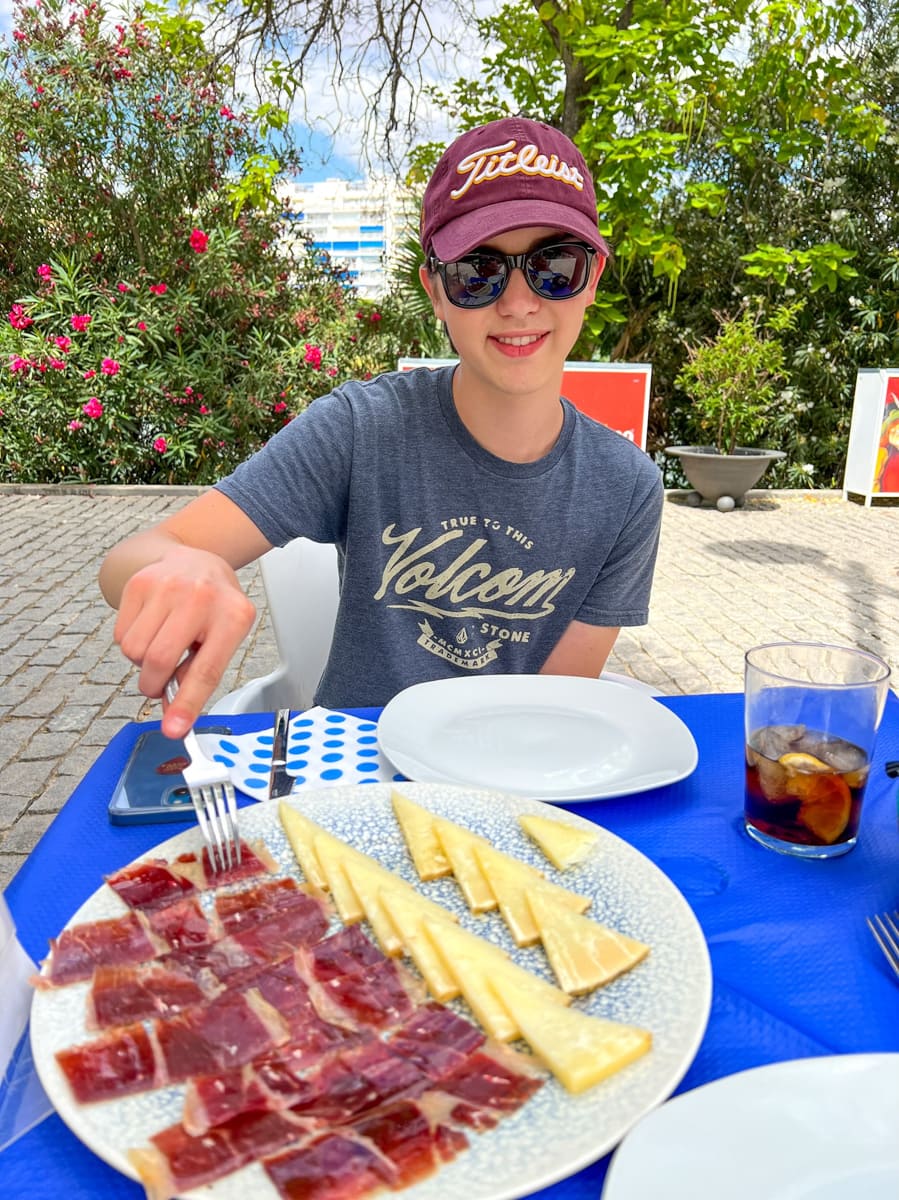
16. Aquarium of Seville
The Aquarium of Seville (La Aquario de Sevilla) holds more than 500,000 gallons of water and 7,000 animals. Touch pools and a shark-filled tunnel impress all ages. Plus, it’s home to more than 400 species that swim in 30+ tanks.
In addition to ocean creatures from the Atlantic Ocean and other waterways, there is an emphasis on the rich and varied animal and plant life of the Guadalquivir River.
The Seville Aquarium teaches local lore and geography, too. Learn about Magellan’s voyage to the Spice Islands in the New World, which set sail from Seville in 1519.
Get your skip-the-line Aquarium of Seville tickets before you go.
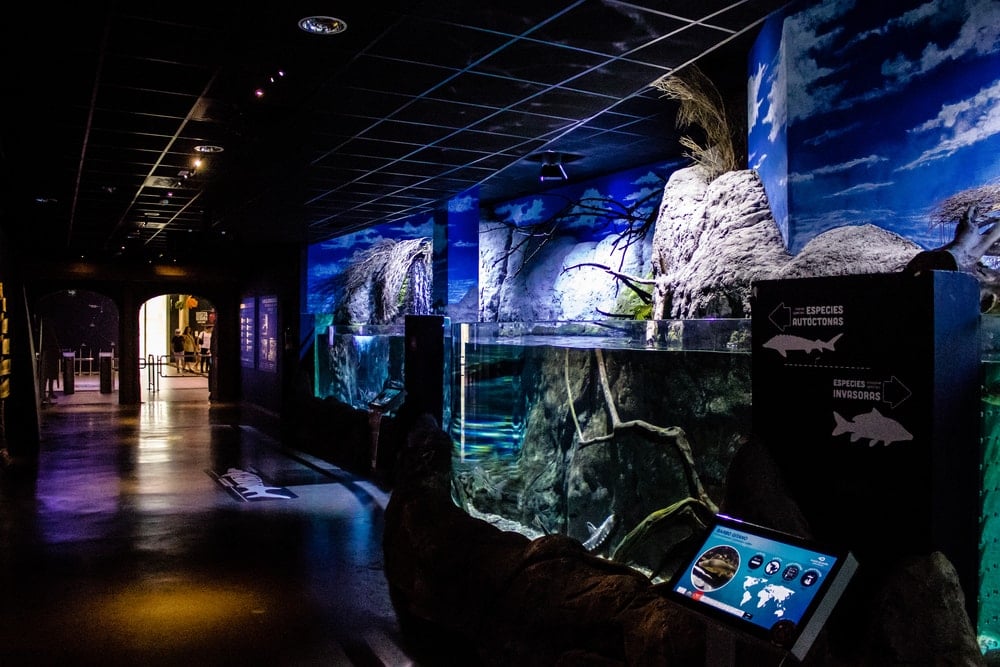
17. La Casa de la Ciencia
La Casa de la Ciencia (House of Science) is housed in the Peruvian Pavilion from the 1929 Expo. Many of the interactive displays at this science museum are in both Spanish and English, making learning easy and fun for kids.
Families will be impressed by the permanent Cetaceans of Andalusia exhibit with its display of whales and dolphins that populate the Andalusian coast. Look for skeletons and life-sized models of a pilot whale, striped dolphin, killer whale, humpback whale, and other cetaceans.
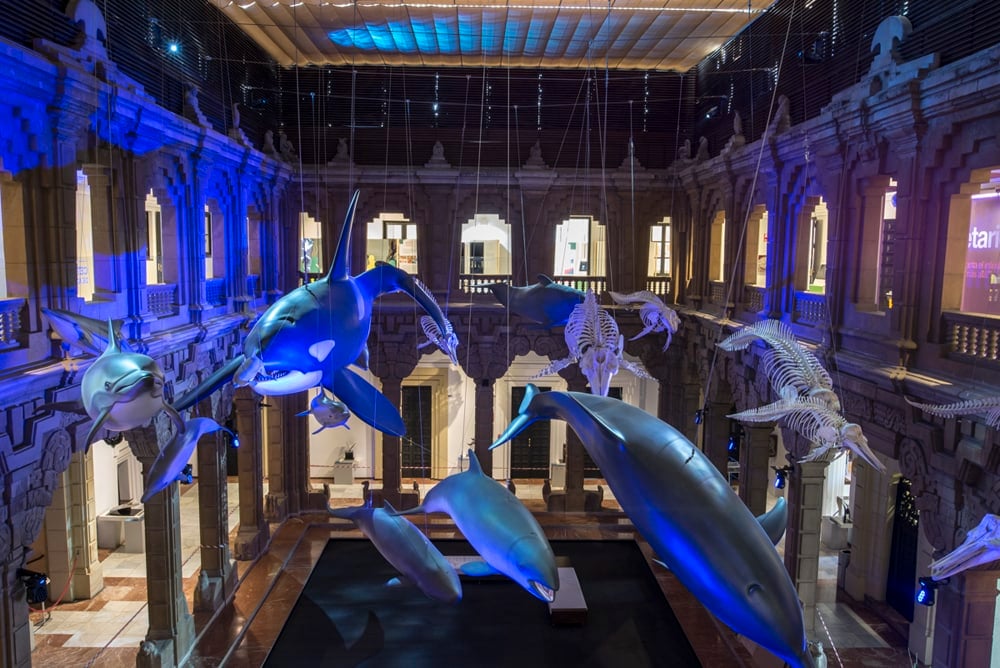
18. Kayak or Stand Up Paddleboard Rentals
Kayaking and paddleboarding are popular outdoor activities in Seville, with all ages and abilities spotted gliding across the Guadalquivir River.
Particularly appealing if traveling with outdoorsy kids or teens, your family can see Seville from the water aboard your own personal watercraft. Book a private tour, group tour, or rent your own kayaks. Families can also participate in stand-up paddleboard tours or rent boards to explore on their own. Some age limits may apply for group tours. (Typically, 6+ or 8+.)
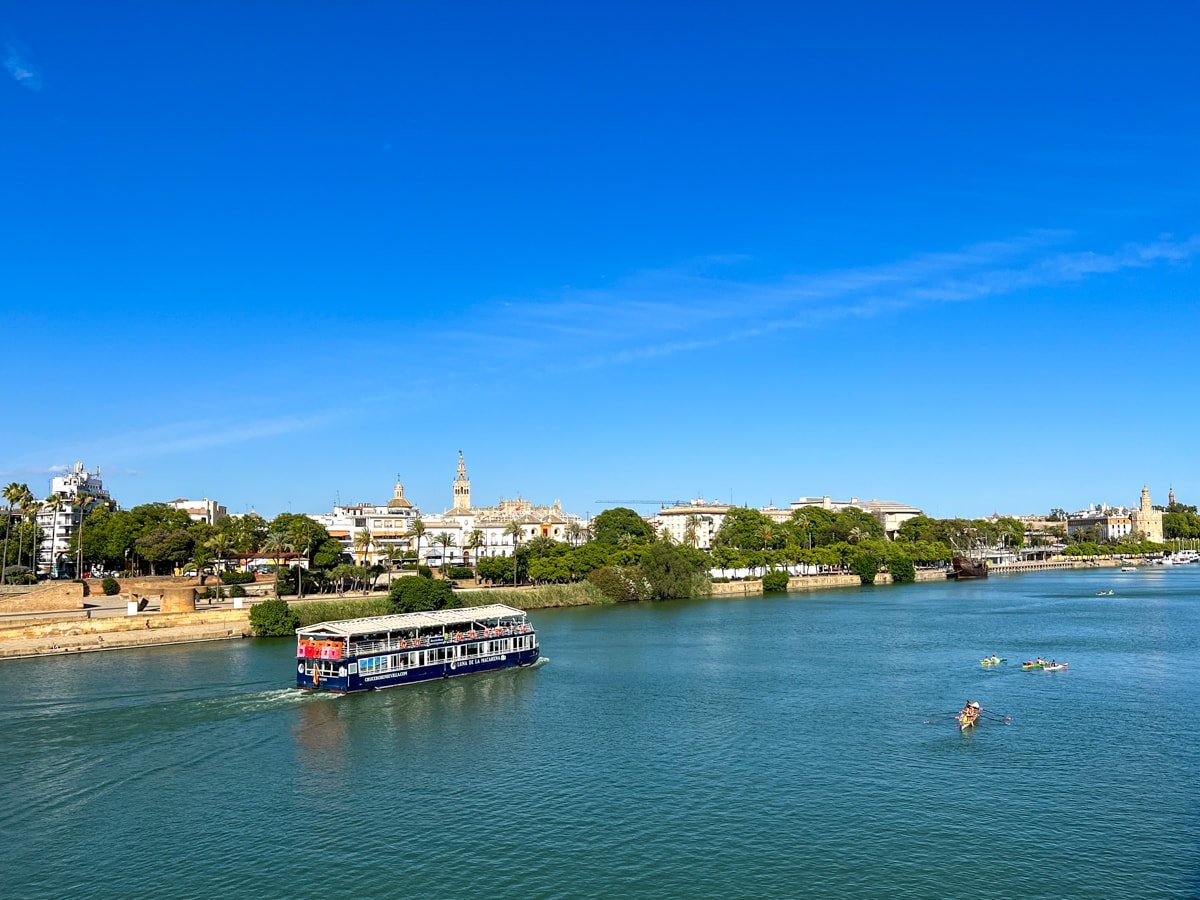
19. Metropol Parasol
Everyone from young kids to older teens will be impressed by the engineering feat of Metropol Parasol. This mind-bending structure is also known as the Mushrooms of the Incarnation (Las Setas de la Incarnation) for its distinct toadstool-like appearance.
Designed by German architect Jürgen Mayer and installed in the city of Seville in 2005, some say this is the largest wooden structure in the world. Its six large, curved parasols measure approximately 490 by 230 feet, with a height of up to 85 feet.
Come here for photo ops and views of Seville from the upper-level lookout points. Then browse the Mercado de la Encarnación market, an indoor marketplace selling fresh produce and other foods in the shade of the mushrooms. There’s even a tapas restaurant located inside the parasols for your dining pleasure.
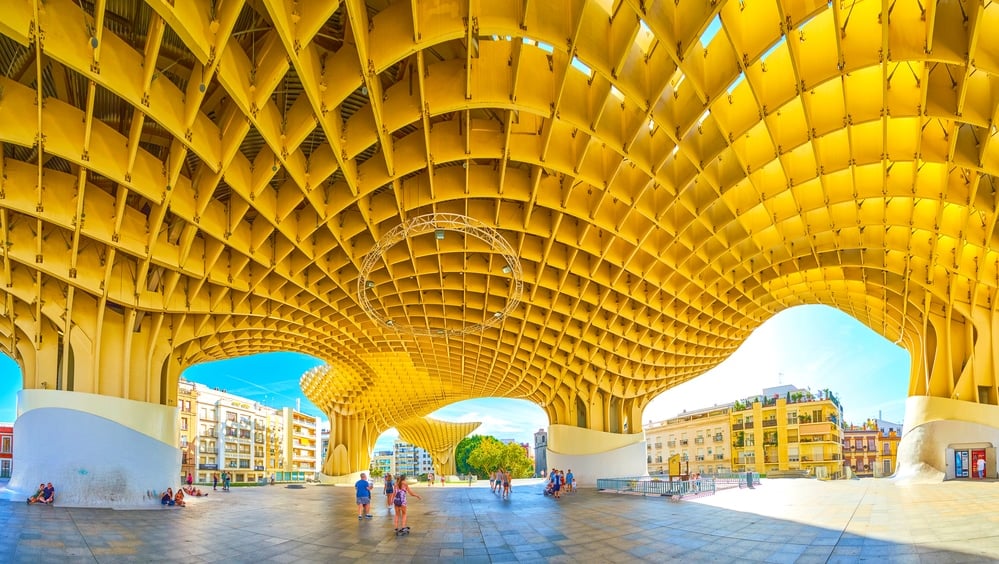
20. Antiquitarium de Sevilla
Located in the basement of Metropol Parasol you’ll find the Antiquitarium de Sevilla. This archeological museum may please budding Indiana Jones types.
View Roman, Visigoth, and Islamic ruins from the 1st century BC to the 12th century AD. These were unearthed by chance during the construction of the center.
The small museum spans just over 50,000 square feet and won’t take long to explore. Besides, the entrance fee is minimal, or you can enter for free with a Real Alcázar ticket.
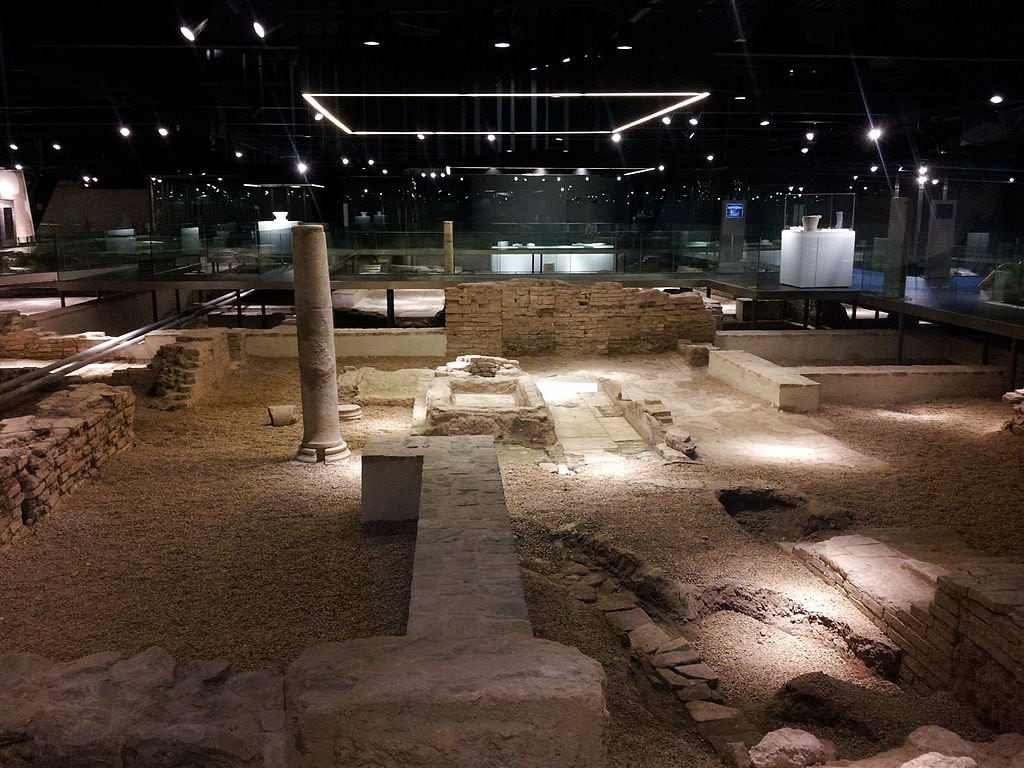
21. Day Trips from Seville
Gibraltar
Get a taste of Jolly Old England during your trip to the South of Spain with a day trip to Gibraltar. British forces captured Gibraltar in the early 1700s and the peninsula has been controlled by Great Britain ever since.
Gibraltar was designed as a military town, but it does hold its own charm. The Rock is inhabited by 30,000 British, Spanish, and Moroccan residents who speak the Queen’s English.
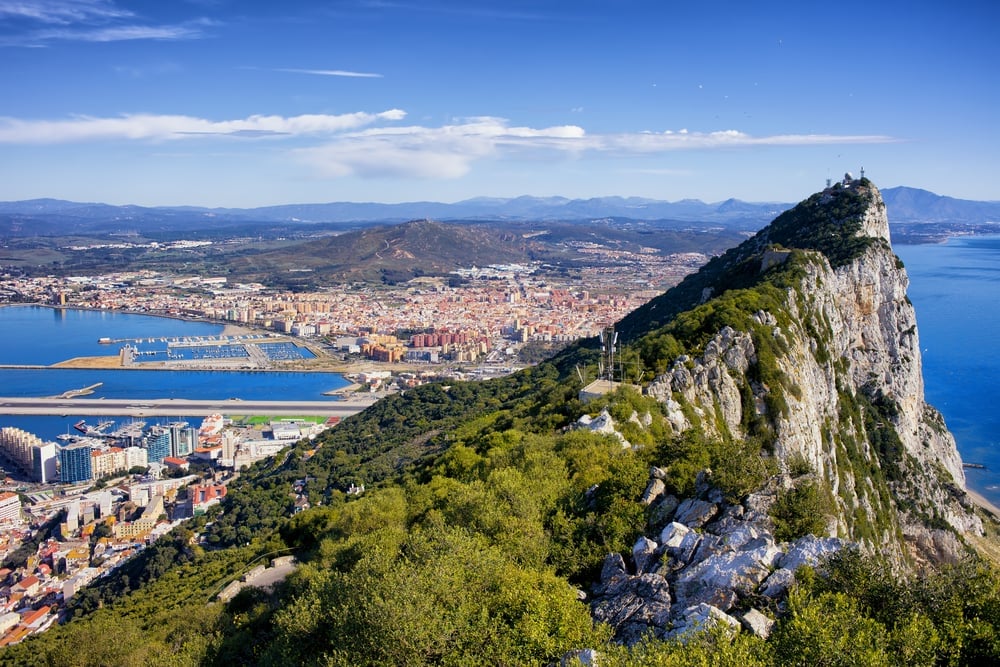
The imposing Rock of Gibraltar juts into the sky, dominating the rest of the tip of the Iberian Peninsula. Take a cable car to the top for unbeatable views.
Rent a car for the day to reach Gibraltar in about two hours from Seville. Be sure to bring your passport!
Or, book a Gibraltar tour with GetYourGuide to see wild Barbary macaques on the top of The Rock, explore the limestone St. Michael’s Cave, and enjoy free time for shopping and lunch in the city center. Hotel pick-up and drop-off are included.
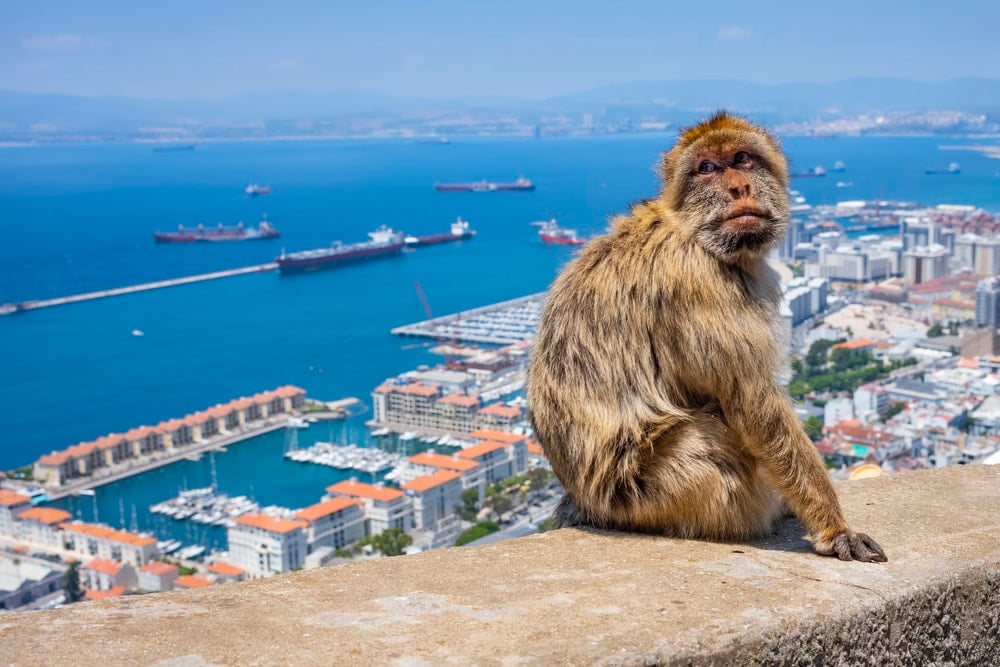
Córdoba
The Mezquita is a stunning Moorish mosque-turned-cathedral in the city of Córdoba. Striking red-and-white striped arches plundered from Roman ruins top 856 columns within the building’s interior.
If you have the time, then plan to spend a couple of nights in Córdoba exploring additional Roman ruins and the city’s flower-filled courtyards. This university city makes a nice midway point between Málaga and Seville (about 1 hour by train from either). Our partner, GetYourGuide, also offers guided Córdoba day trips from Seville.
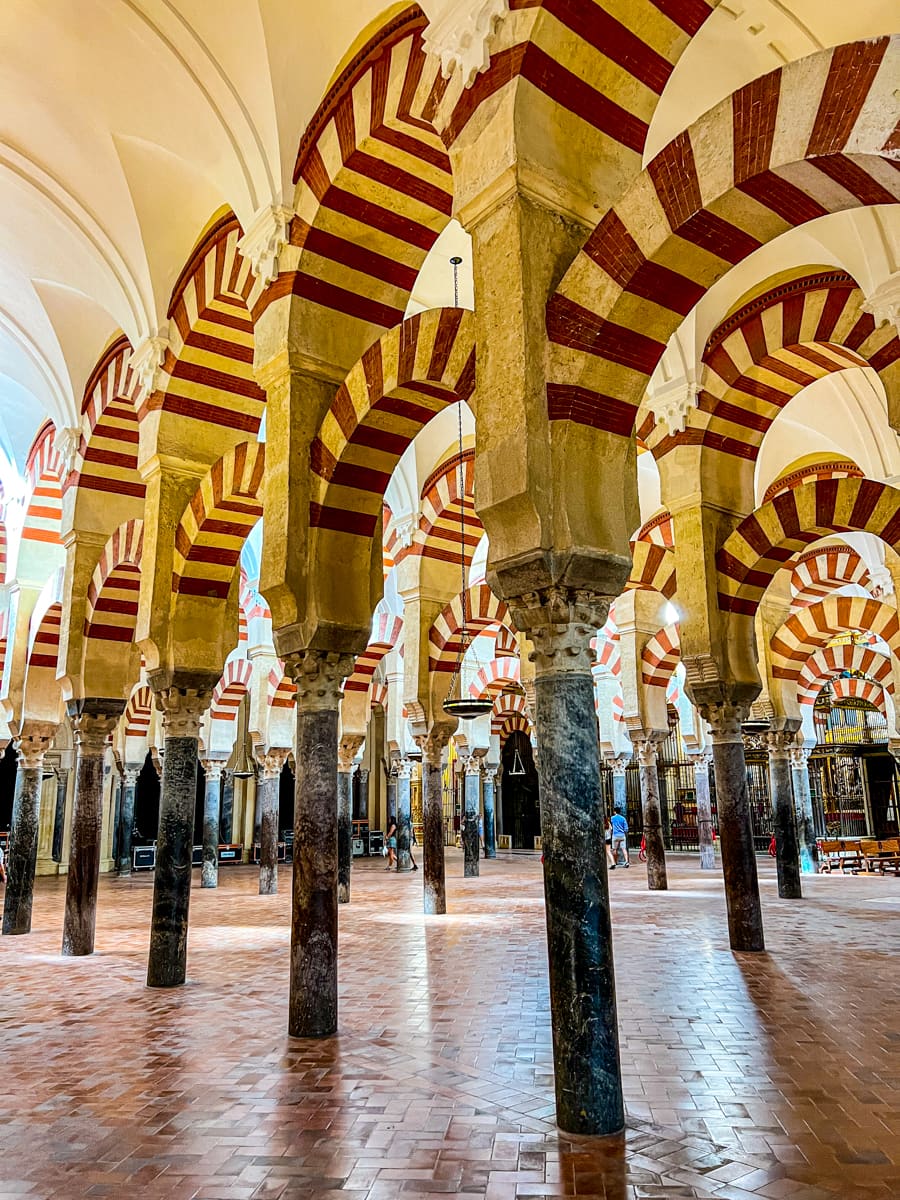
Ronda
Spain’s White Villages, or Pueblos Blancos, include 19 picturesque, whitewashed towns in Andalusia. The largest and most popular is Ronda.
Ronda is also the only White Village with train access. You could certainly rent a car for the day, but parking is notoriously difficult in Ronda and the road there is a bit precarious along winding cliffs. The easiest way to reach Ronda from Seville is via a guided tour with a driver. Experience Ronda and other White Villages during this all-day GetYourGuide tour.
The primary attraction in Ronda is the renowned Puente Nuevo (New Bridge). Despite its name, this beautiful bridge began construction in 1759 and took 34 years to build.
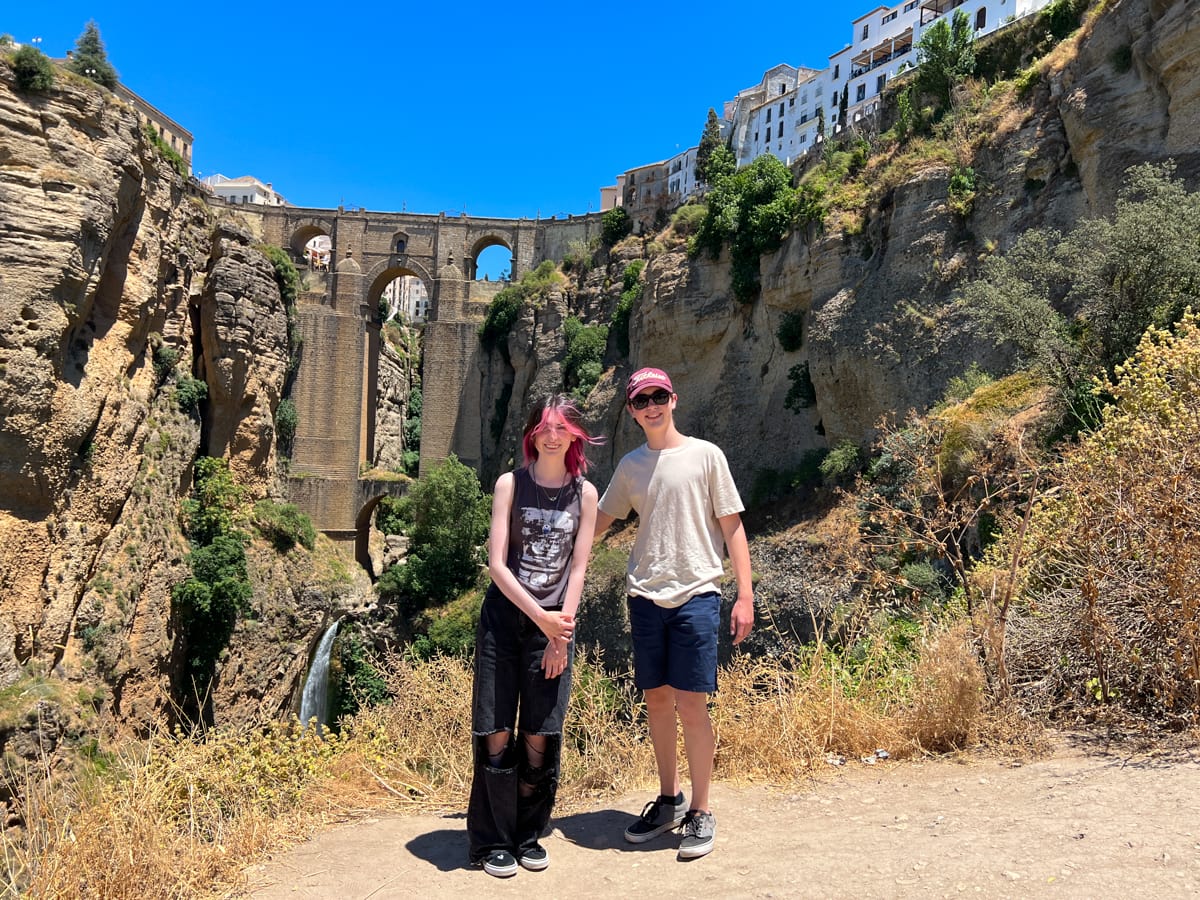
Explore More
Located just a couple hours from Seville, learn about Picasso’s beachfront birthplace with this list of marvelous things to do in Málaga.
Experience neighboring country Portugal with these things to do in Lisbon.
Morocco is a quick trip from Seville across the Strait of Gibraltar. Here’s what to do in Morocco with kids, from Marrakech to the sand dunes in the Sahara Desert.
Discover the pros and cons of a visit to Catalan’s capital city with these tips for visiting Barcelona with kids.
See why Provence with kids really is a dream come true.
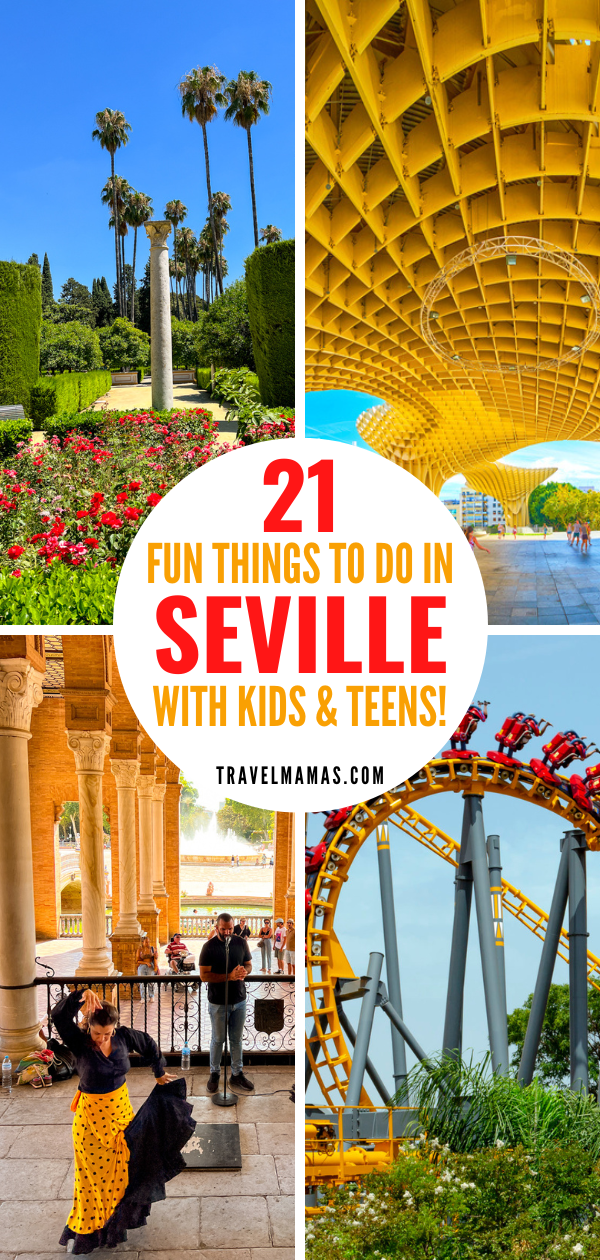
Save this List of Kid-Friendly Seville Activities
Dreaming of a family vacation in Spain? Save this list of the best things to do when visiting Seville with kids. Just pin the image above to Pinterest. We hope you’ll follow Travel Mamas on Pinterest while you’re at it!
Which of these attractions would you enjoy in Spain with kids (or without)? Let us know in the comments below!
A Note from The Travel Mama: I paid full price for everything mentioned in this story. I will always let you know if I receive any comps or discounts related to content. All opinions are mine.
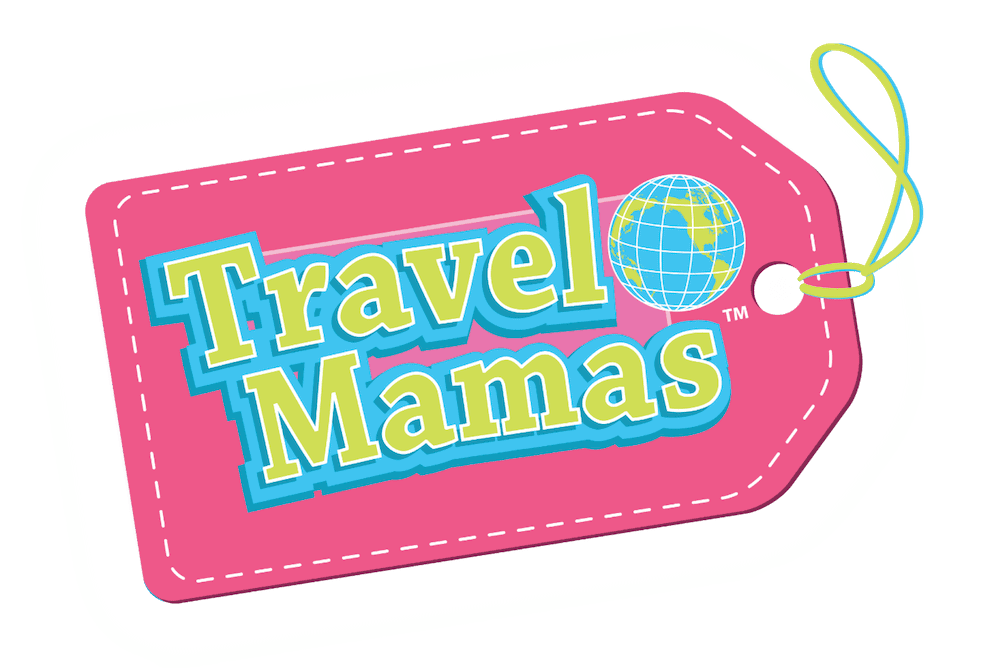
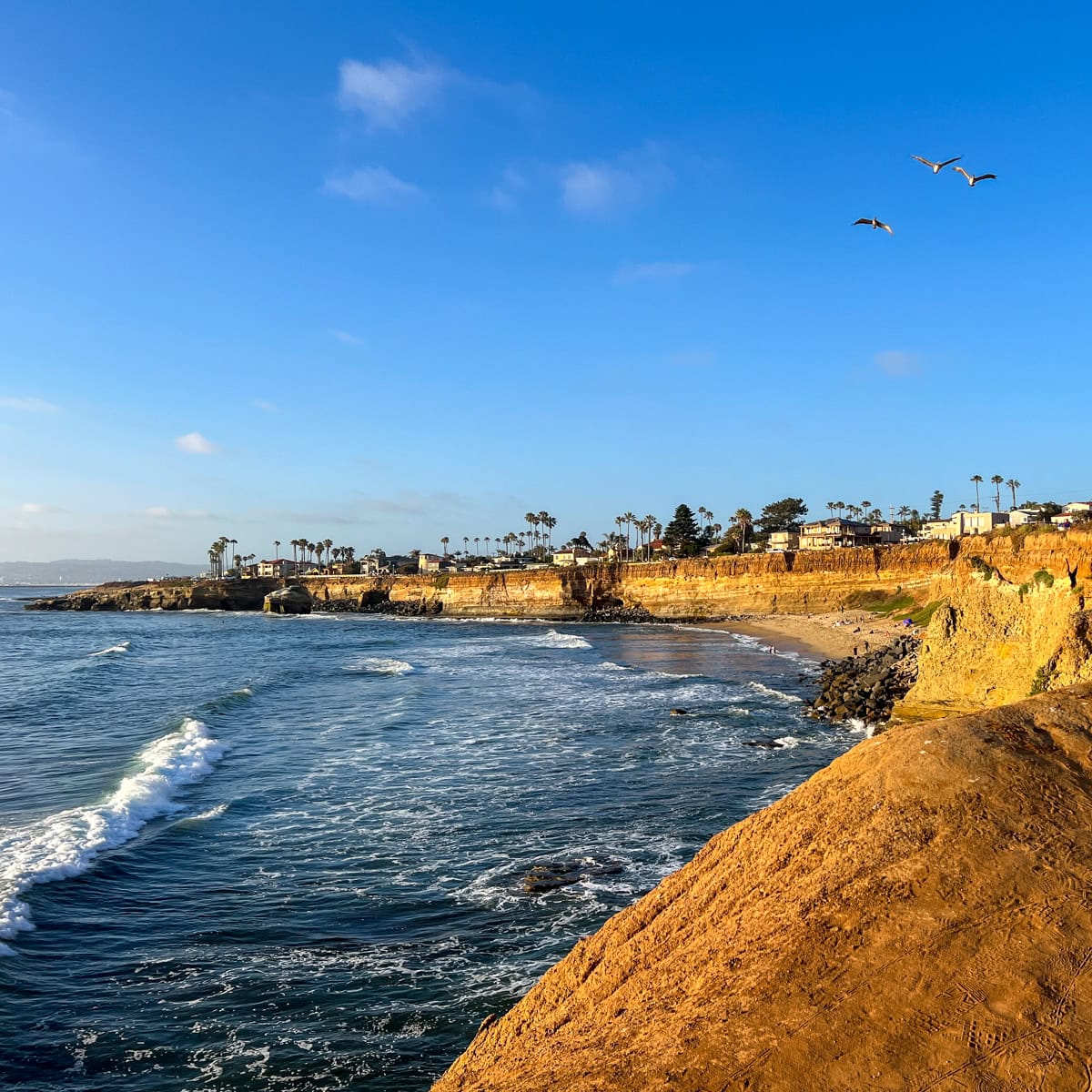

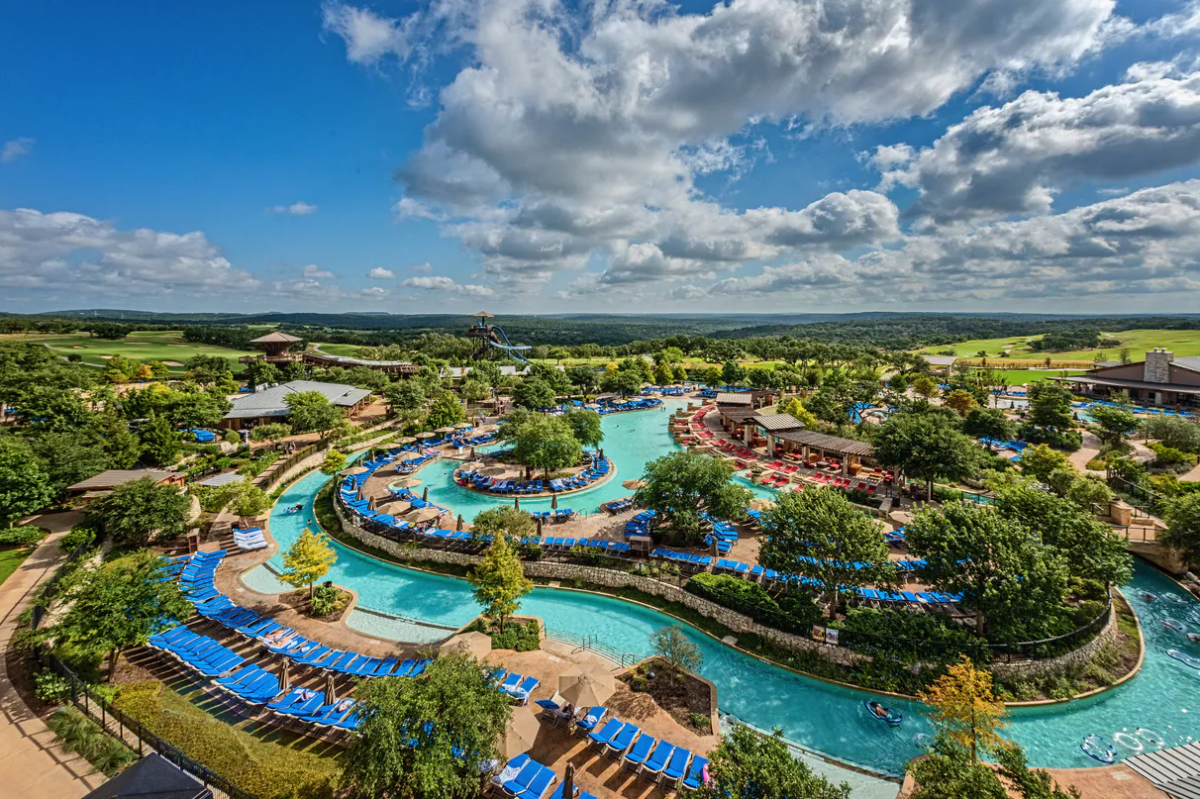
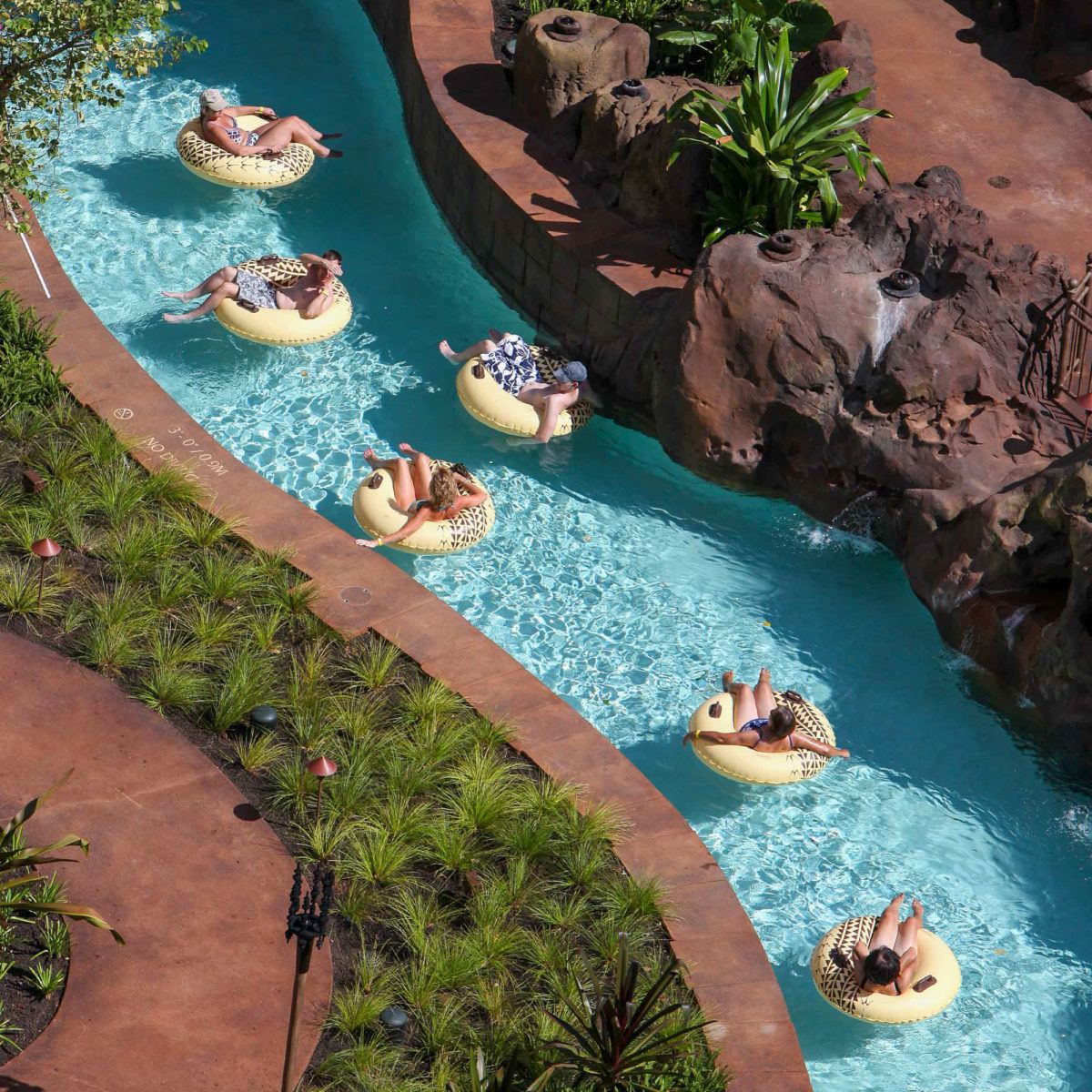
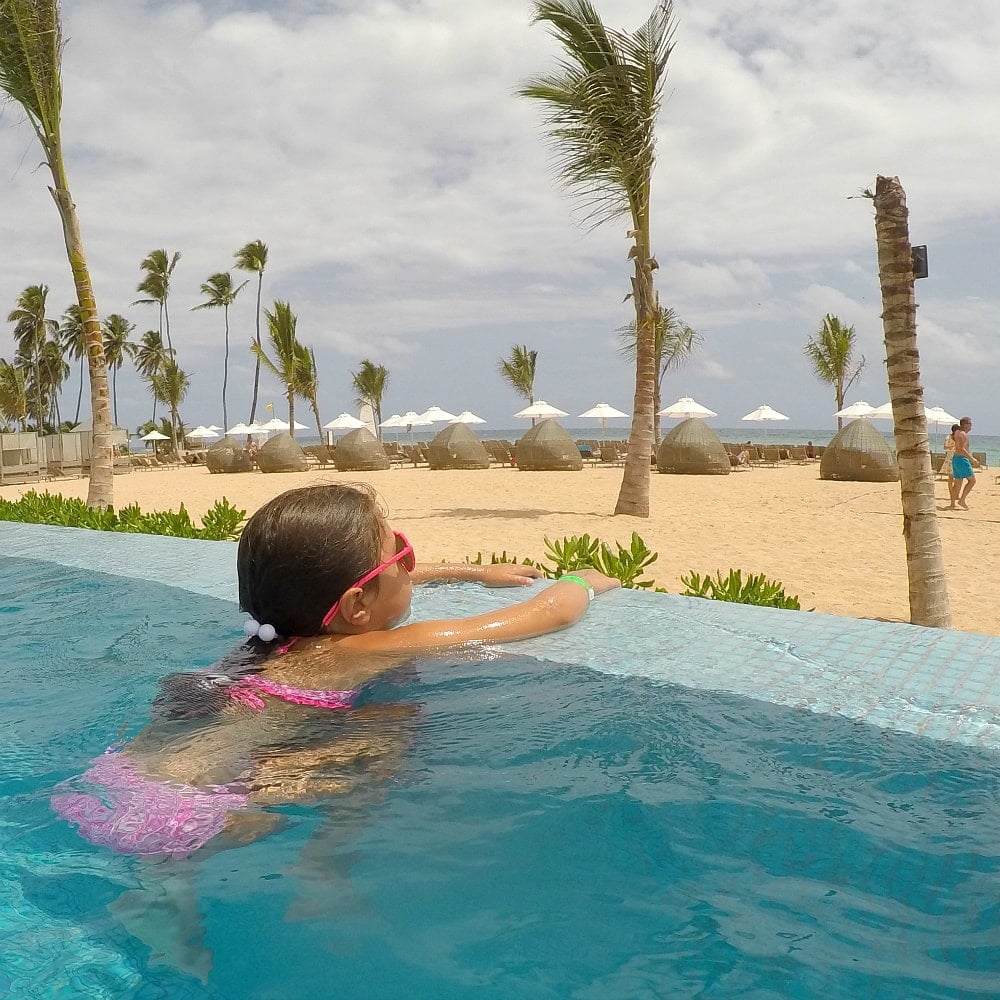
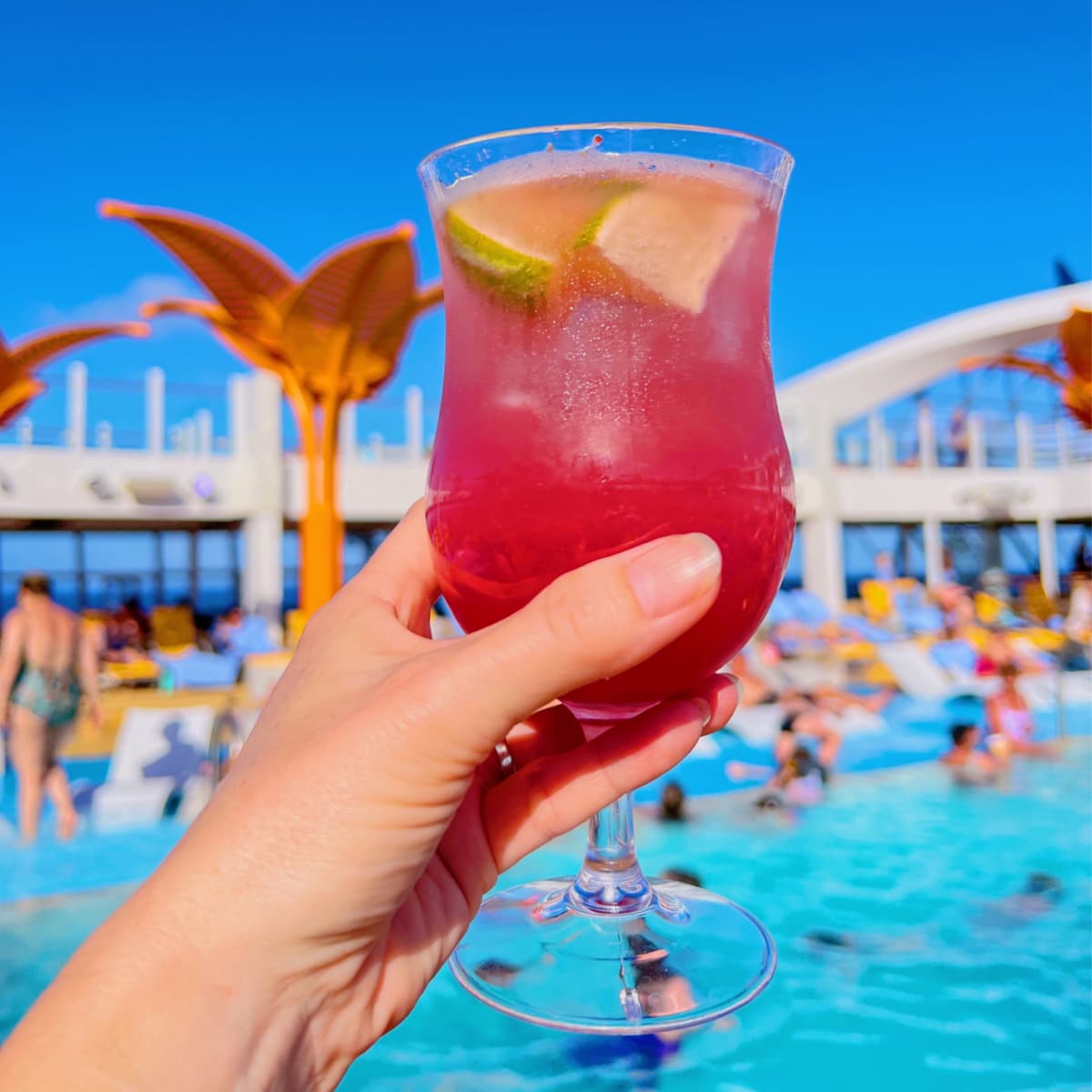


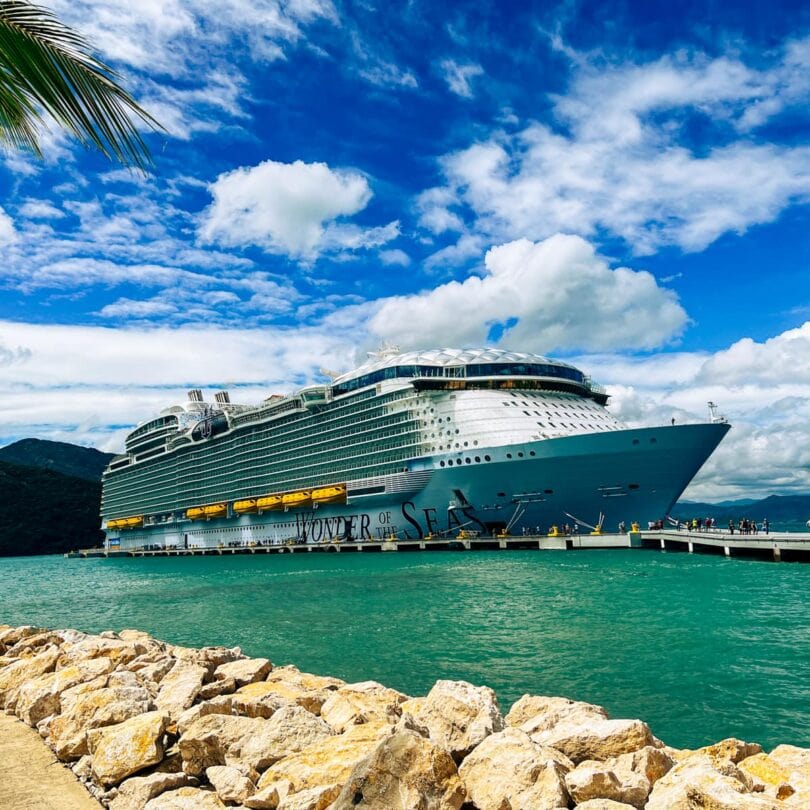
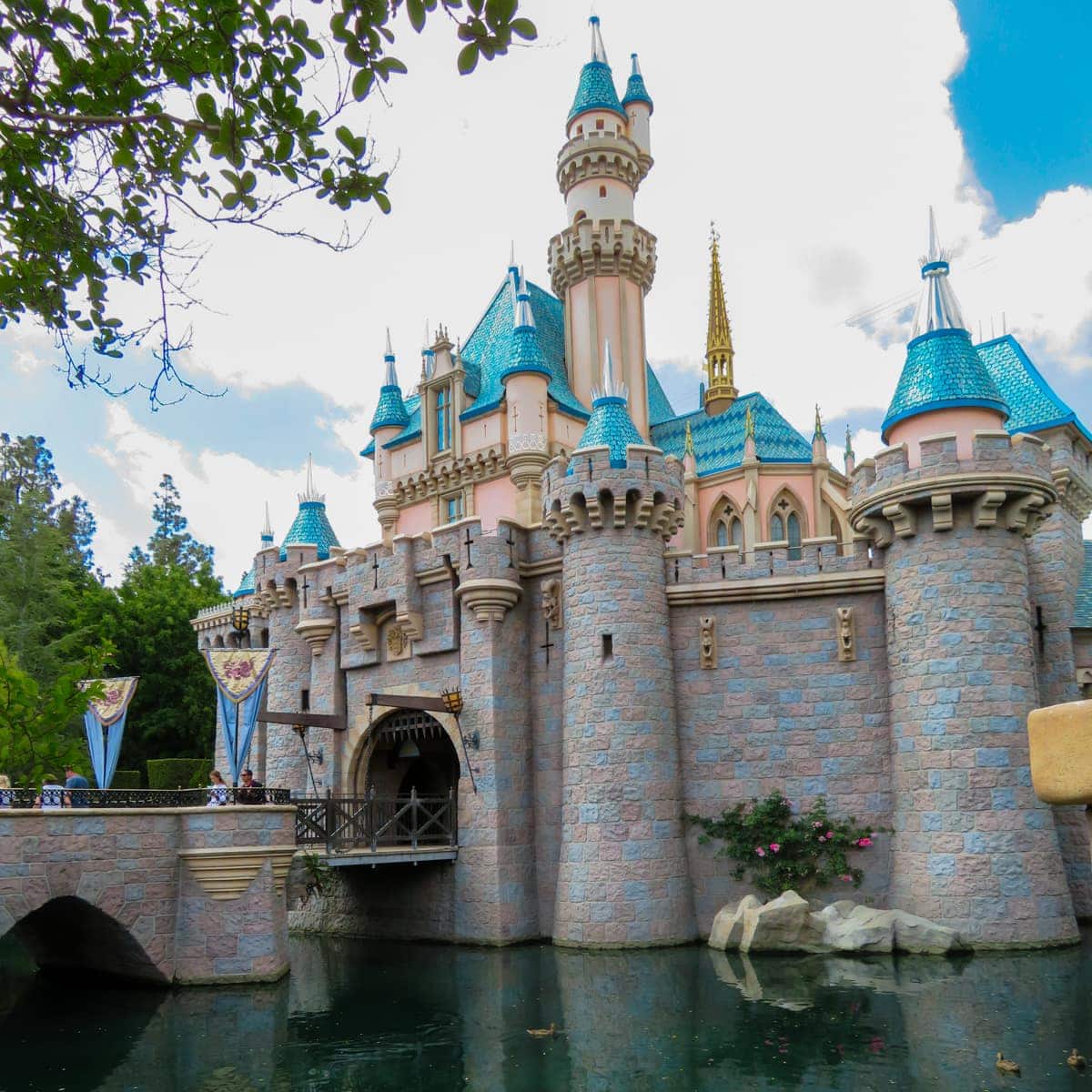
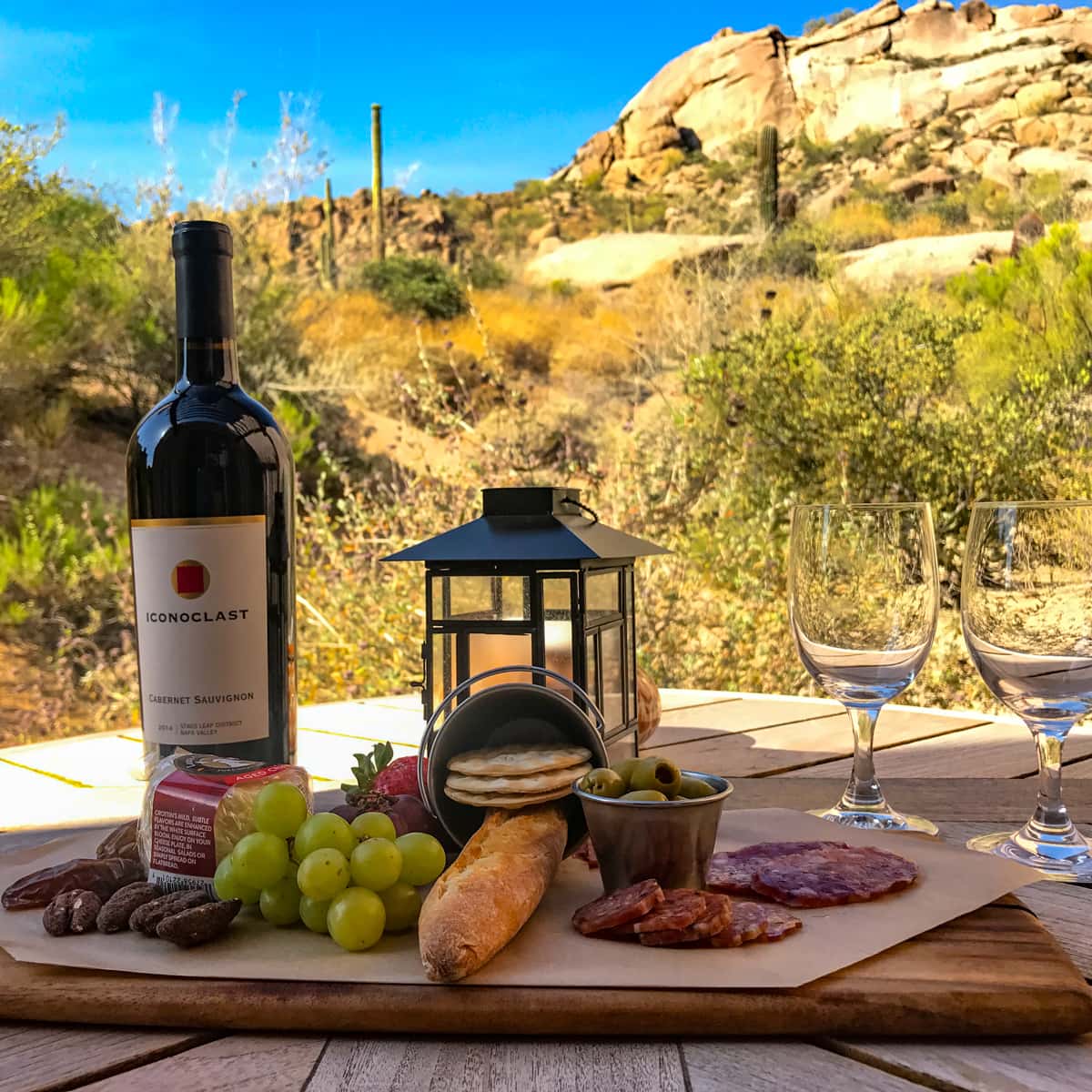





Hi! We’ll be in Seville and Cordoba in a few weeks with our 3 YO and desperately seeking things to do with her. Do you have a family friendly tapas tour you can recommend? the link takes me to all of Seville’s tours and couldn’t find one without clicking through and reading all.
Hi Renee-
In clicking through to some of the GetYourGuide Seville tapas tours, it looks like many allow children but you would need to pay adult pricing for your 3-year-old. With such a young child, I would probably skip the tour and instead explore Triana Market (Mercado de Triana) in Seville on your own to sample all sorts of tapas. Most of the vendors will be happy to explain the different foods available.
Alternatively, you could book this private 2-hour tapas tour in Cordoba: https://gyg.me/iRj2coP3 You would have to pay full-price for your daughter but at least you could go at your family’s pace and the guide could modify to meet a young child’s needs as desired.
Good luck! I hope you find Andalusia as delightful and delicious as my family did!
These are some really exciting places, I would really love to visit these places.
Christiana – I hope you can visit Sevilla very soon!
What a beautiful place and your list sound very interesting. Thanks for sharing.
Kushigalu – So glad you enjoyed our Seville tips! 🙂
Seville has a lot of great places even though I haven’t been there but would love to go there. I’m going to save this when going with my family there. Thank you for sharing!
Fransic – I hope you love Seville as much as I do!
Nnniiiccceeeee…I have always been fascinated by Spain! I would love to have a ride around in a horse-carriage!
Ntensibe – Spain is now my favorite country! So pretty and friendly!
Wow I have never been to Seville, but all those places sure look amazing and worth the visit. The kids will surely love going here and also create lots of memories.
Kat – I hope you can visit Seville someday soon!
These all look like great places to explore as a family. We’ve never been to Spain before, and it is nice to have a variety of destinations to check out.
Marysa – I highly recommend Spain for your next family vacation, and Sevilla in particular!
This is a really wonderful and amazing place to visit with my kids! They’re going to enjoy to be here for sure!
Rose Ann – I hope your family loves Seville as much as my family did!
Seville looks stunning, with lots of things to do. The Guadalquivir River is so beautiful, and it looks perfect for a peaceful sunny day out.
Sonia – I love how Sevillanos really revere and make use of their lovely Guadalquivir River!
Wow so many awesome places to visit! My boys would love to watch the Flamenco dancers, and I would too! And the architecture there is just gorgeous, I’d like to see it in person as I’m sure it’s even more impressive.
Stephanie – I was enthralled by the Flamenco dancers and my guitar-playing son was obsessed with the finger work of the guitar players!
This is such an amazing resource. There’s so much to do as a family in Seville. You don’t want to miss out on anything!
Beth – Seville really is a big small city where you can cover a lot of ground in a short period of time!
Looks like you all had an amazing time doing a lot of awesome things in Spain! This would be so nice to be able to do, there are so many items on this list that I want to do, that I wouldn’t know where to start first.
Luna – You really can’t go wrong no matter where you start in Sevilla!
Ok…. I just got back from Italy and now I absolutely MUST visit spain! Pinning this inclusive guide for planning. Thank you!
Mila – Thanks so much for pinning!
Oh my! What a beautiful place Seville is! Have to add to my bucket list and will certainly check out the book you recommend.
Stephanie – It’s such a fun read, especially if you’re headed to Seville or Madrid!